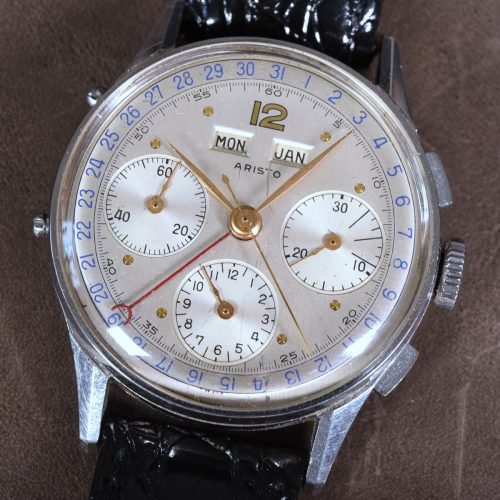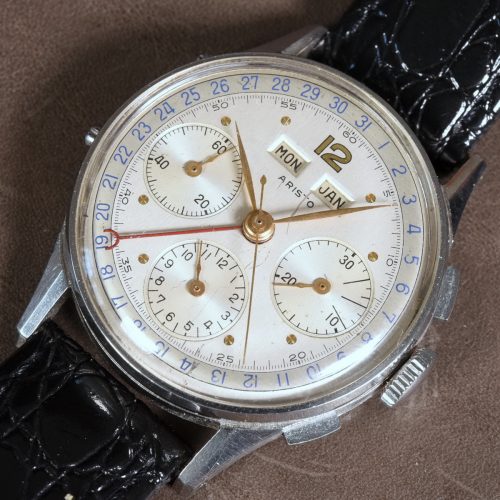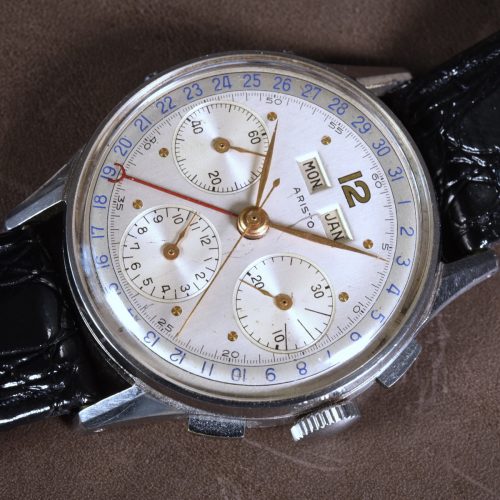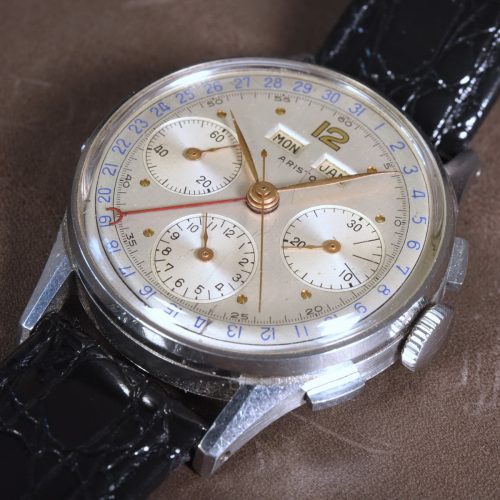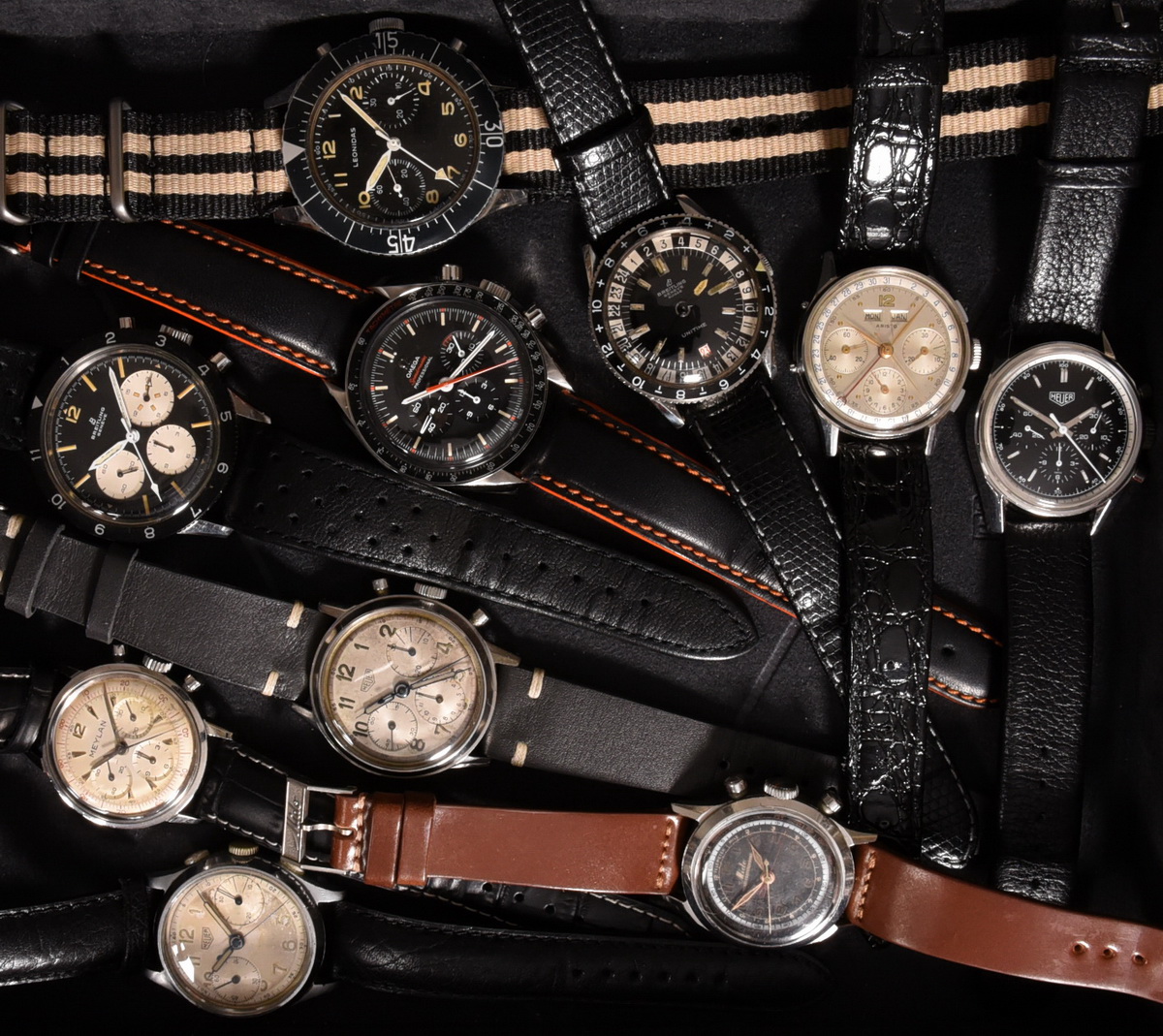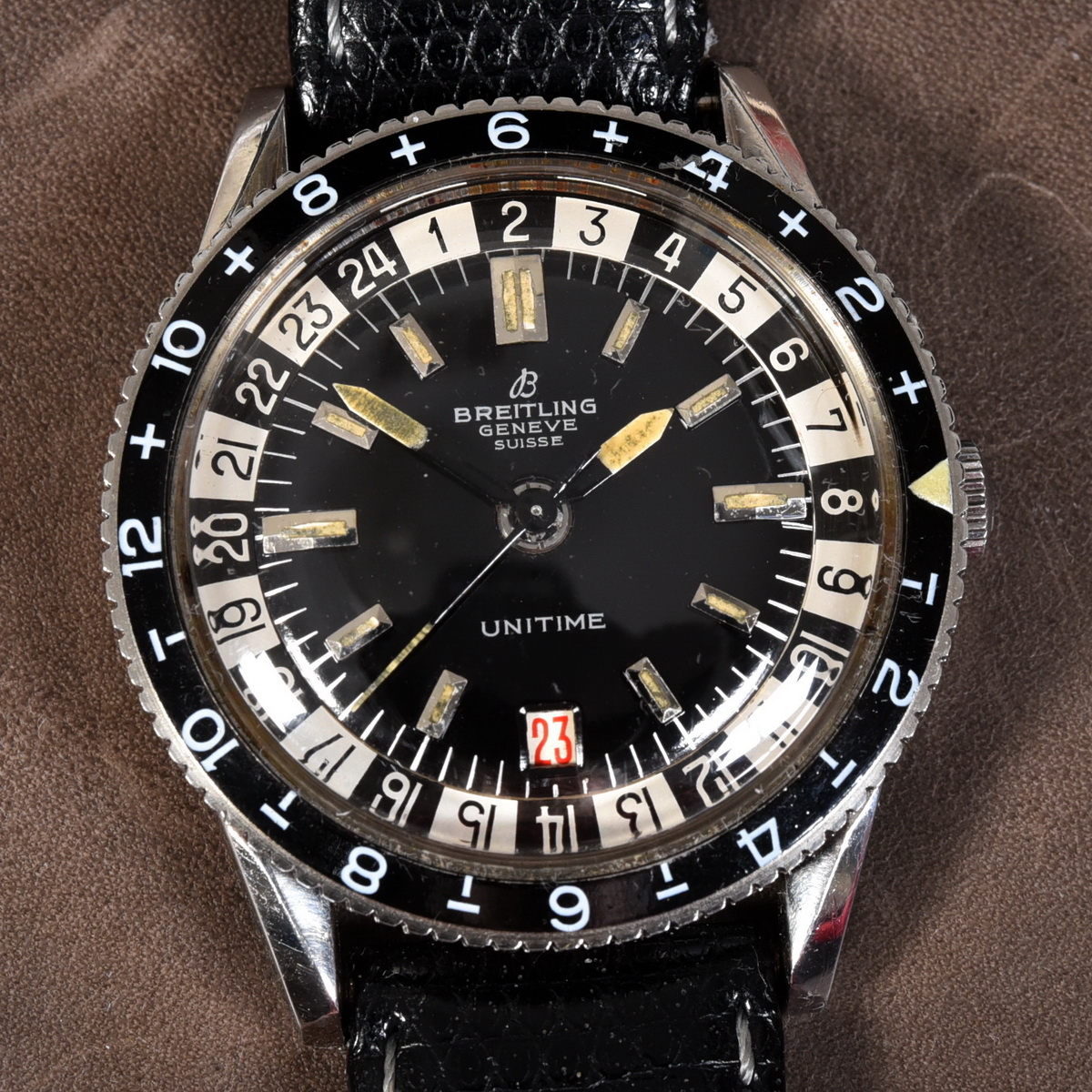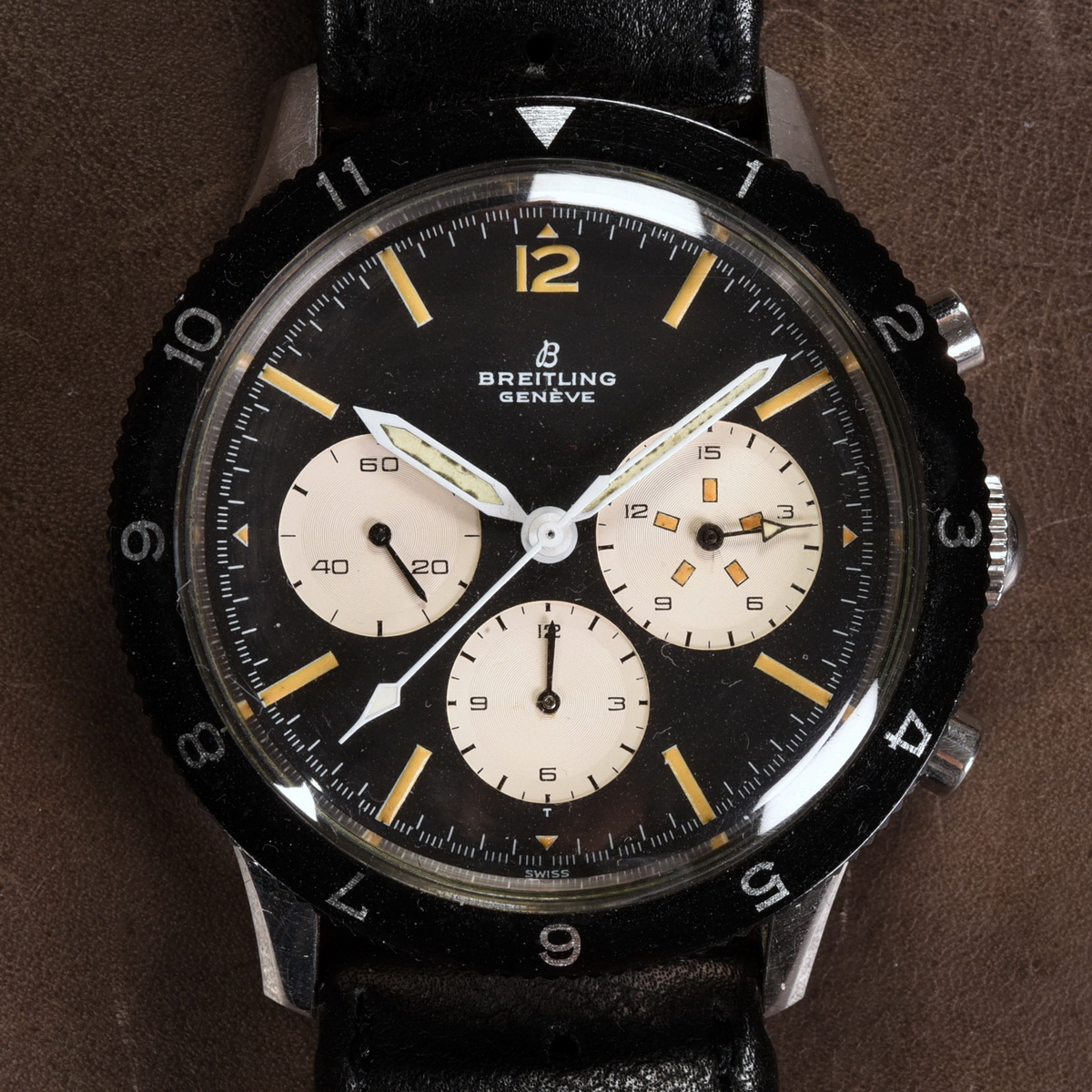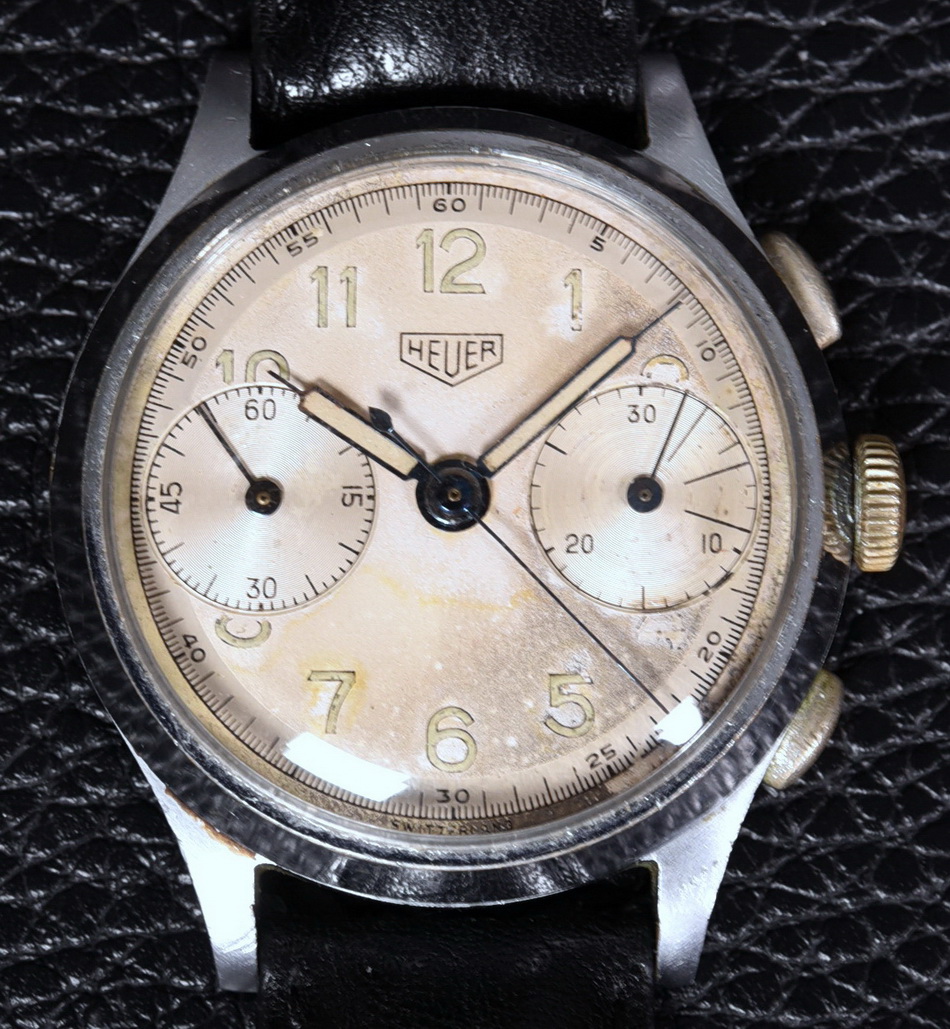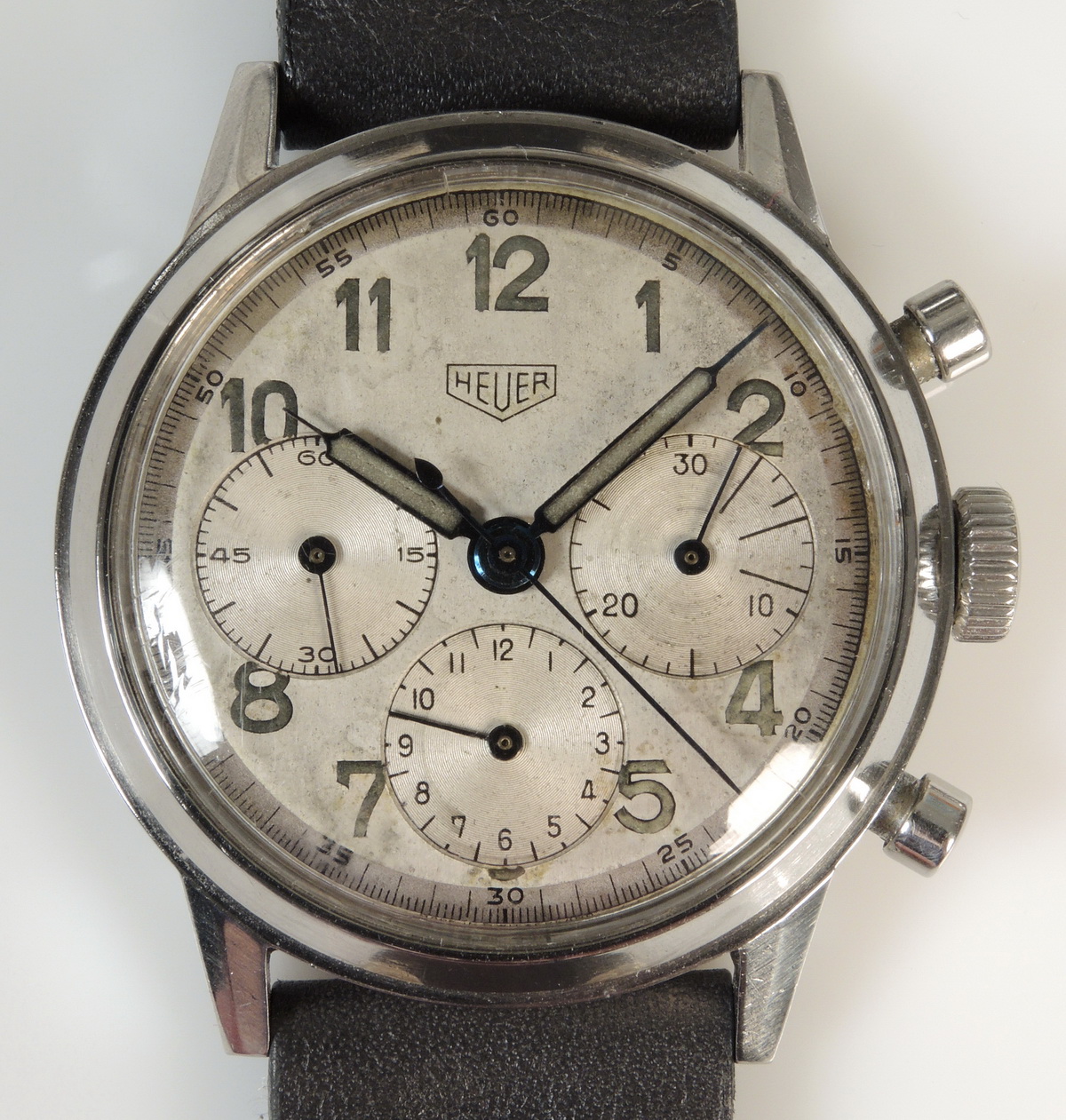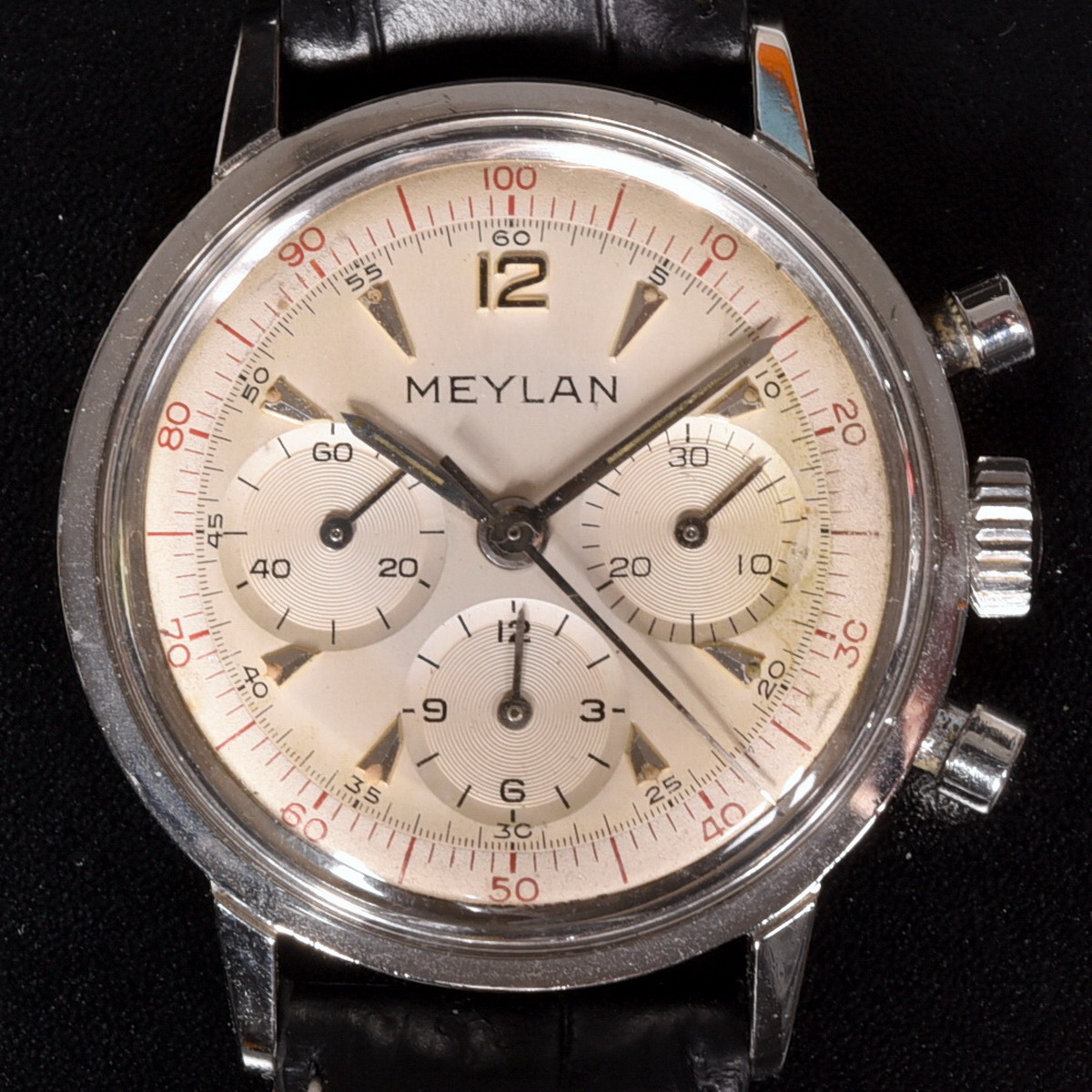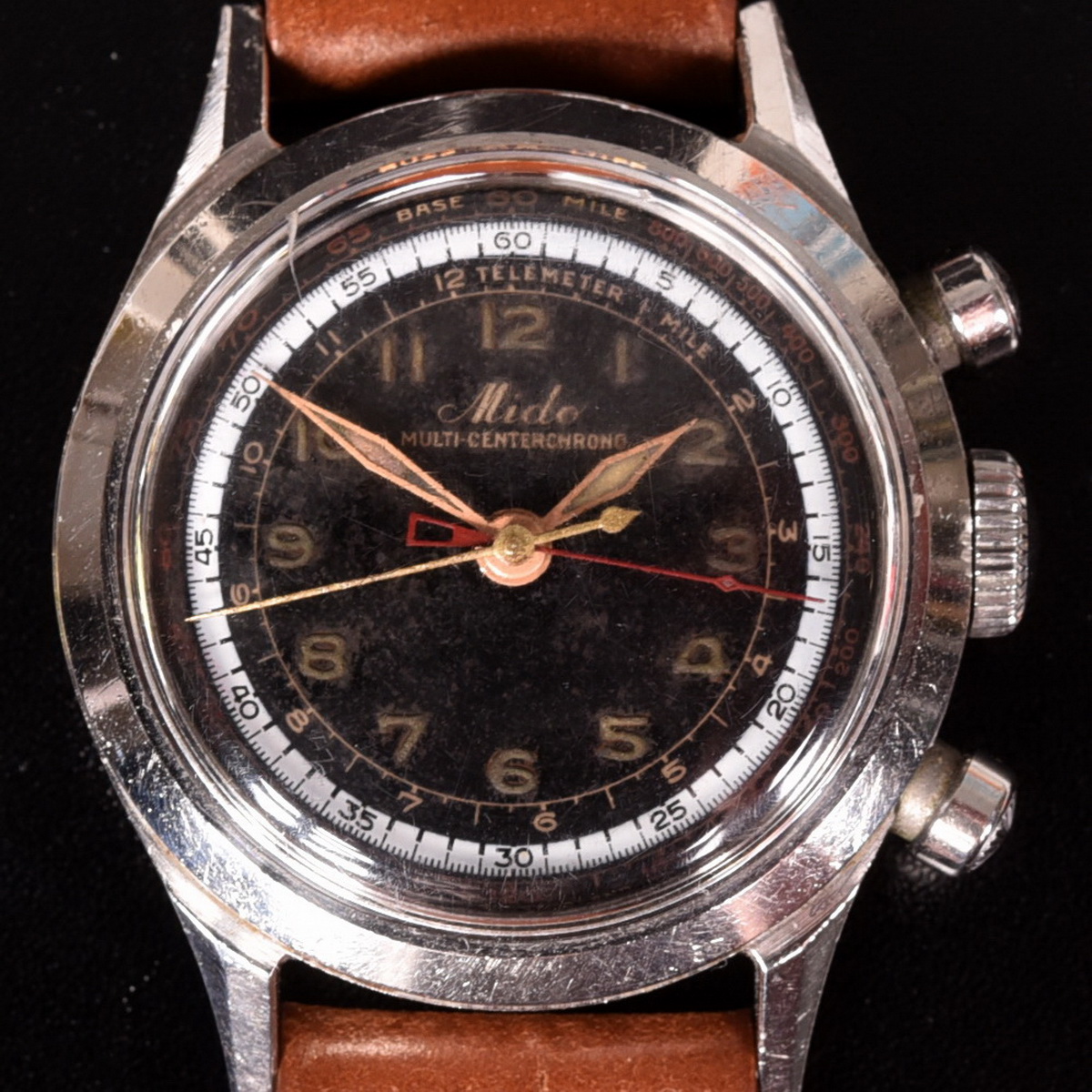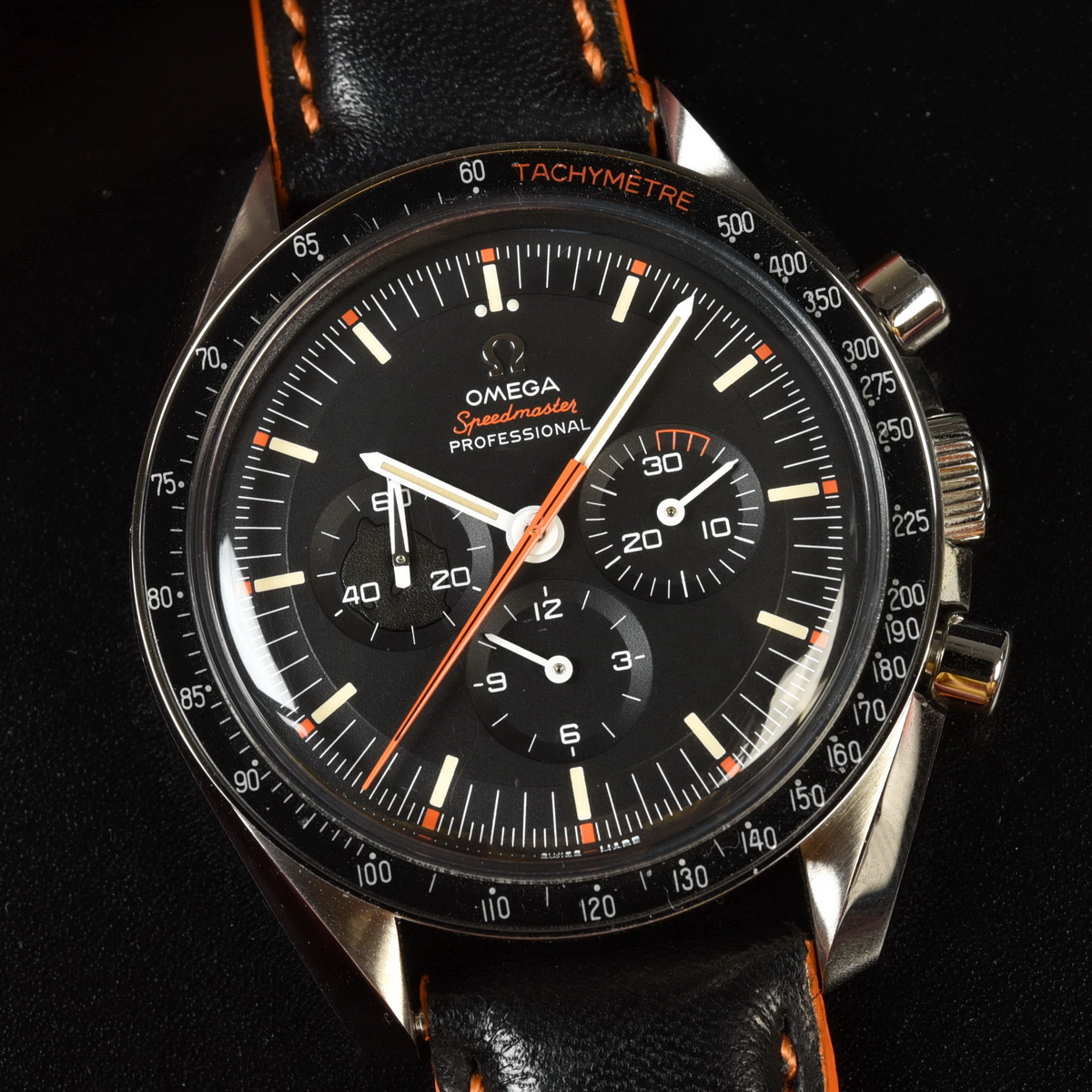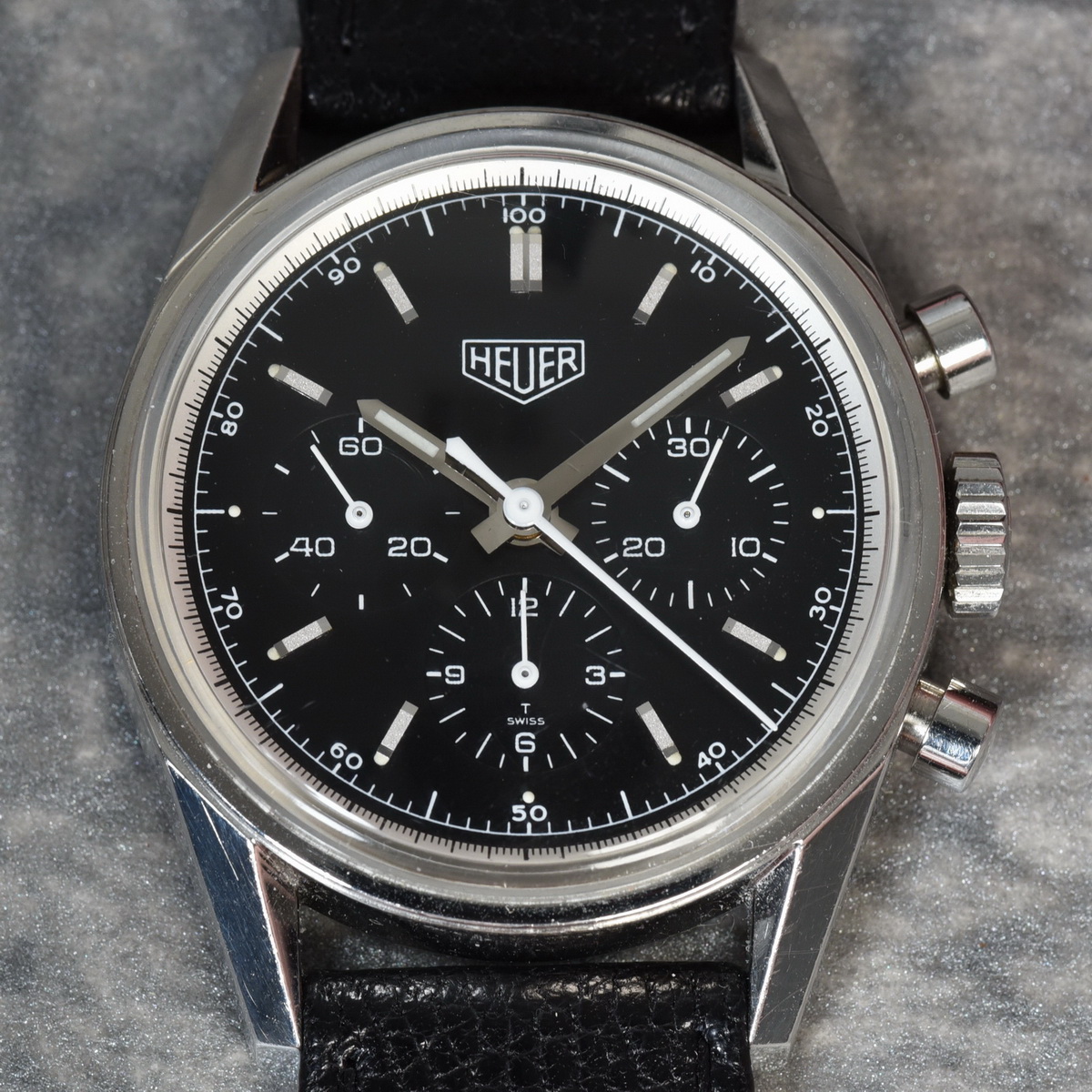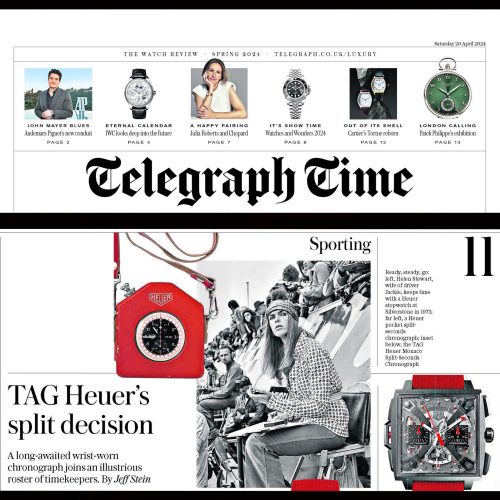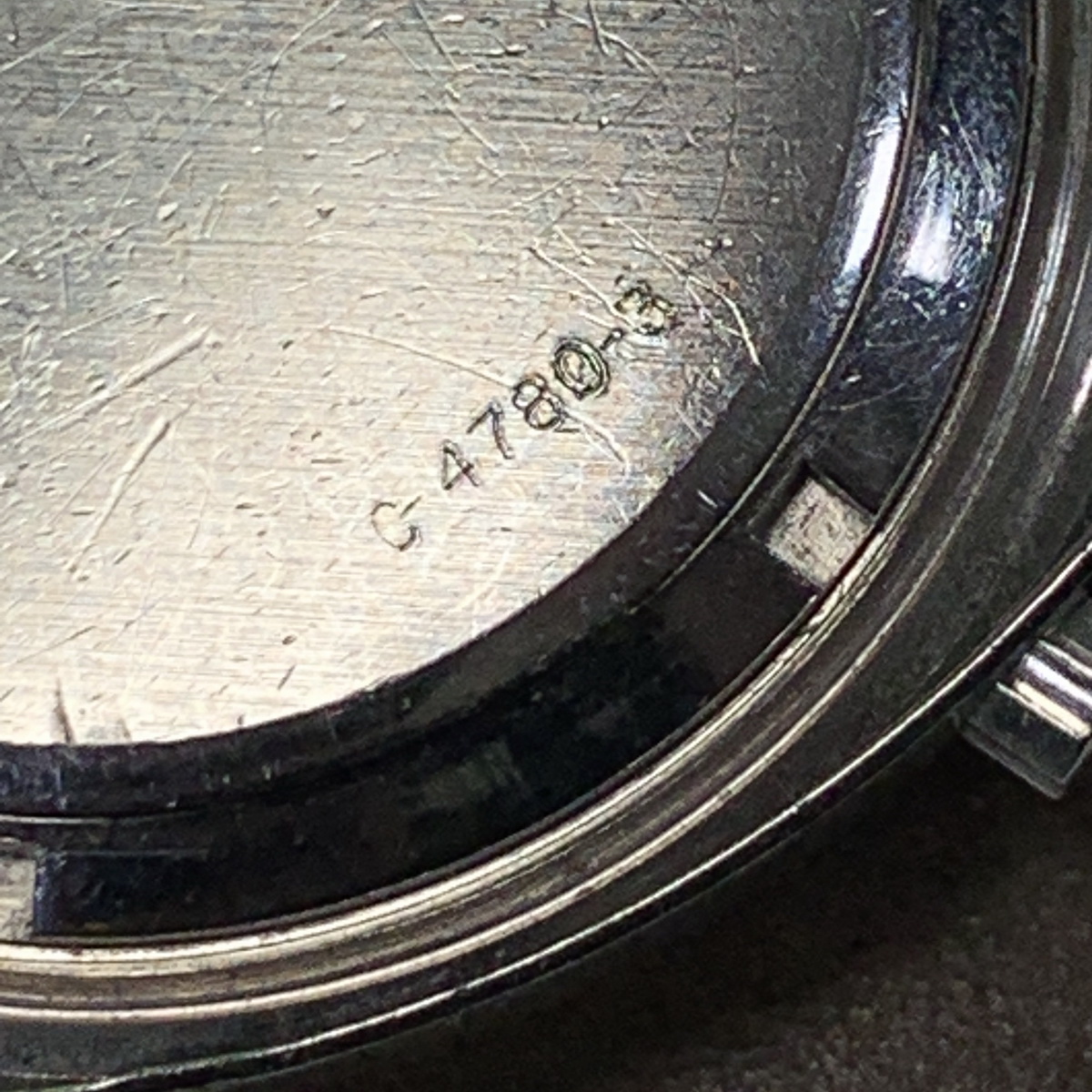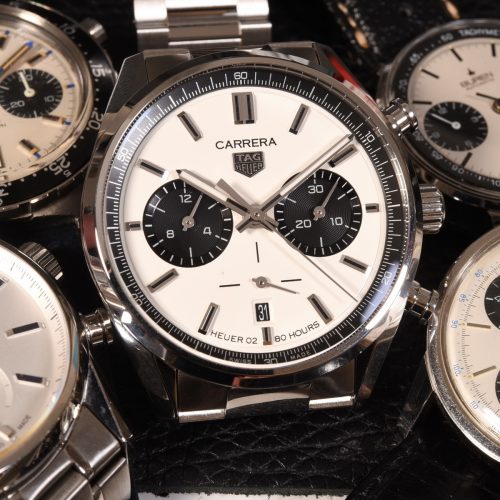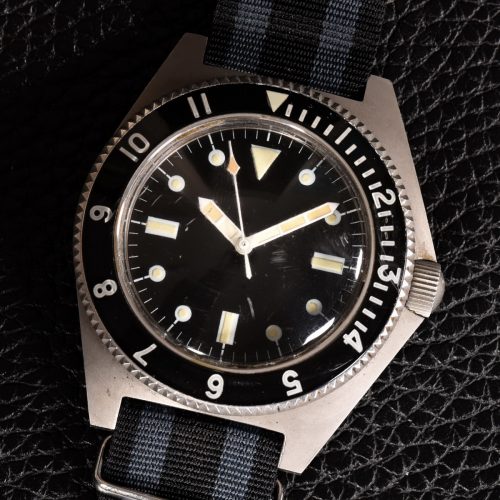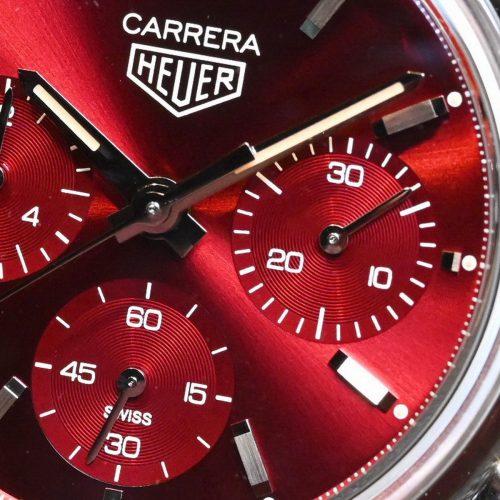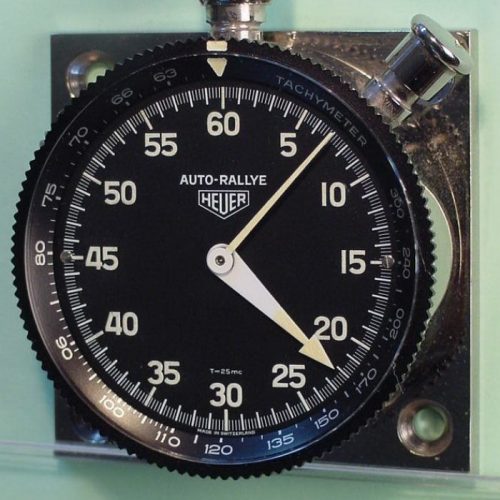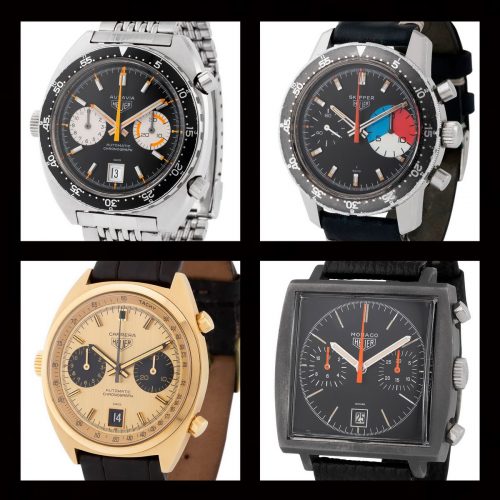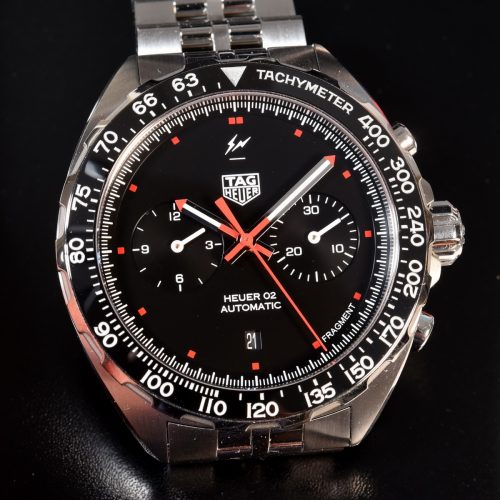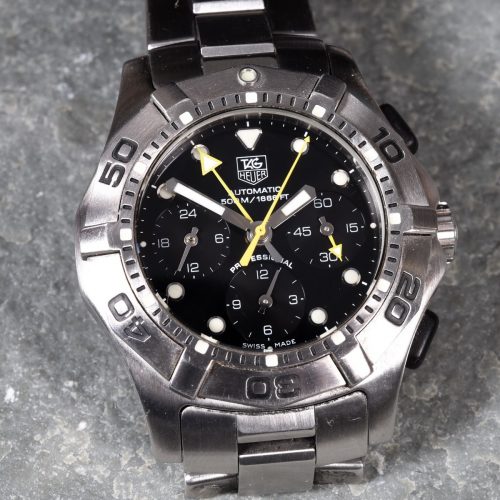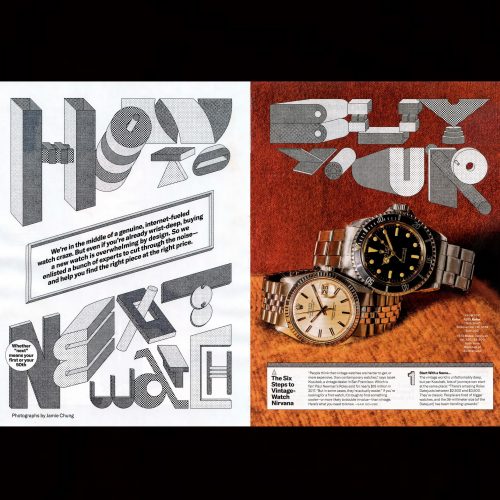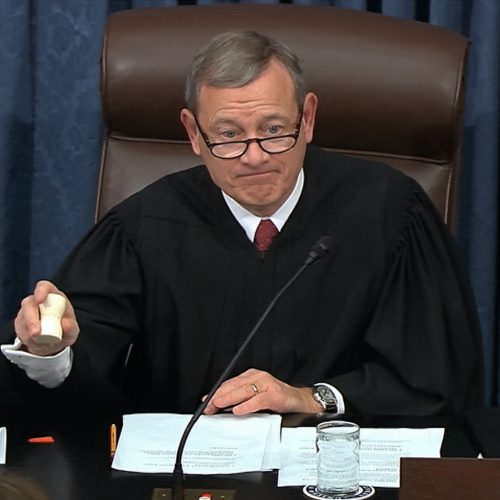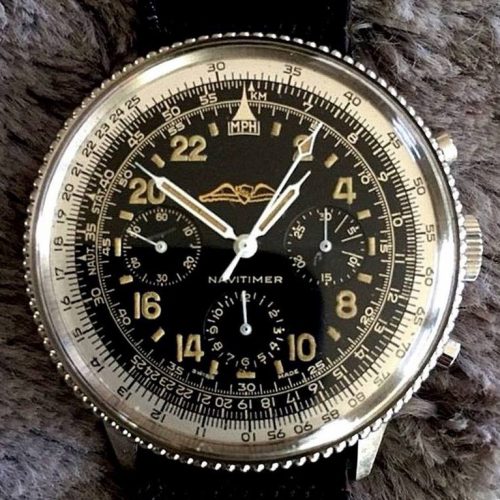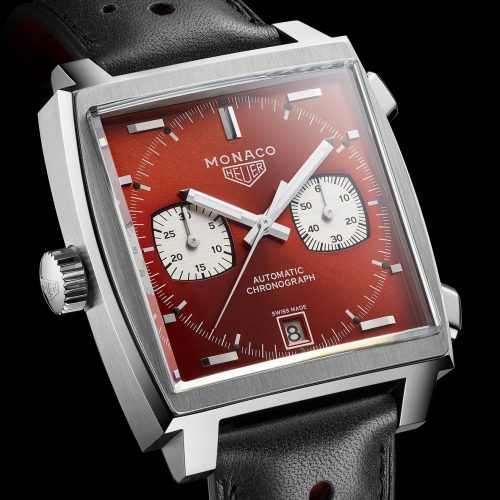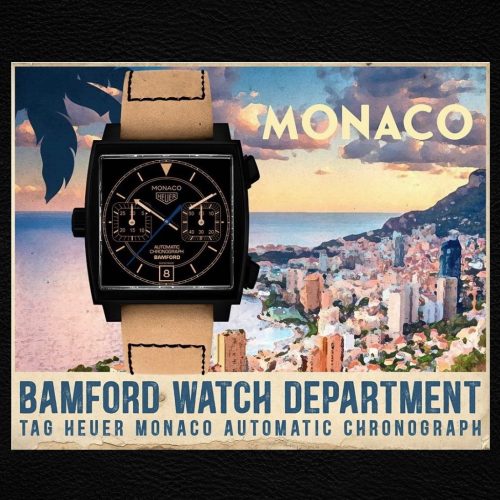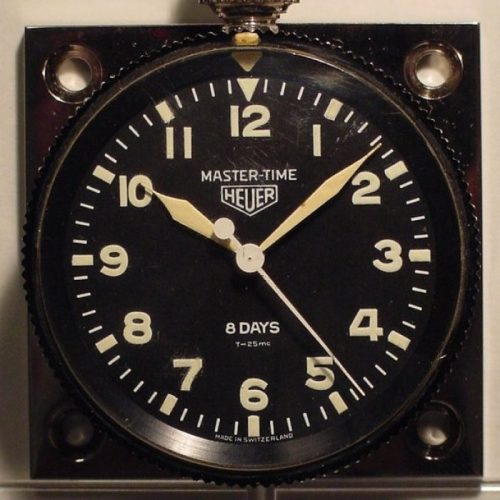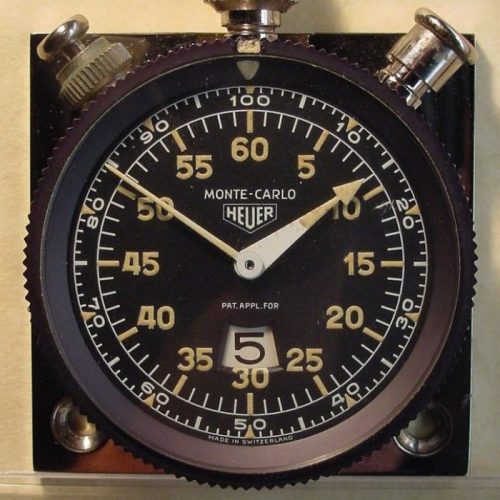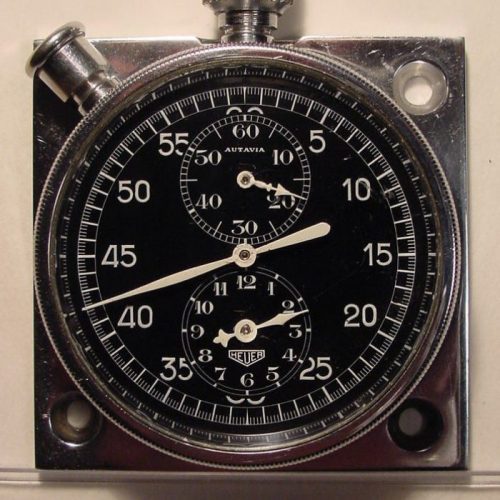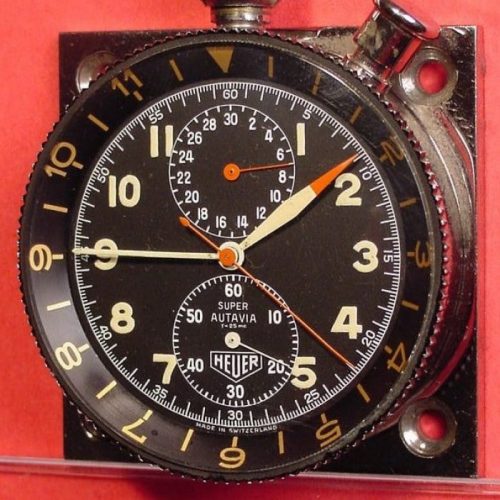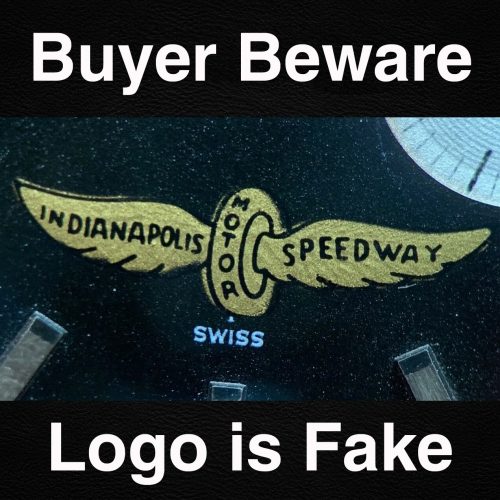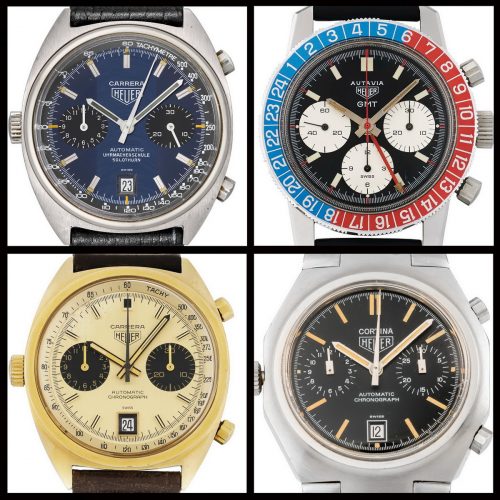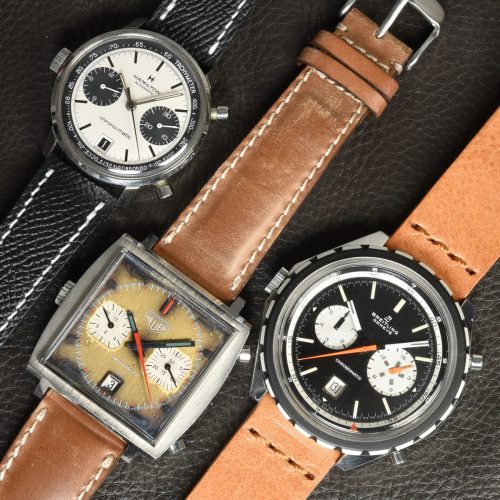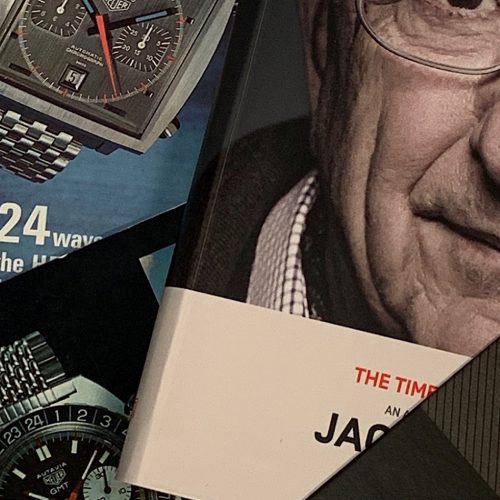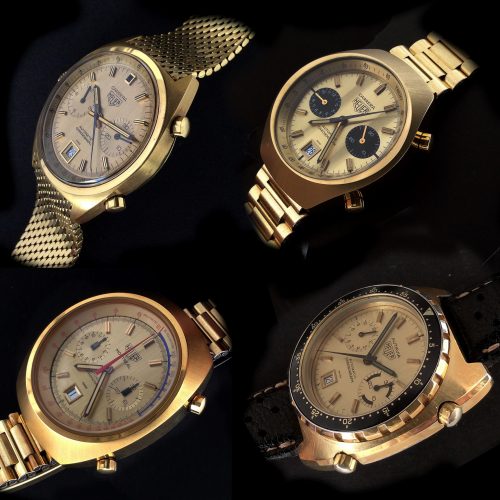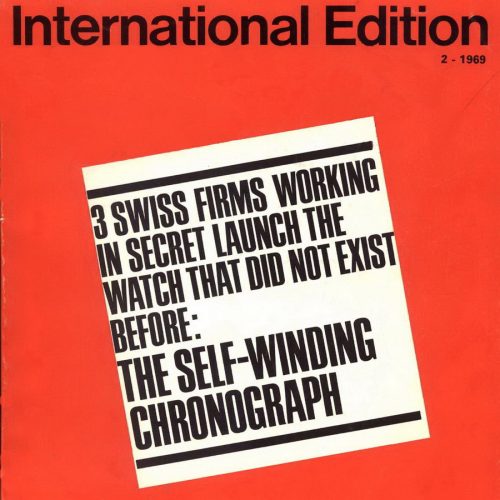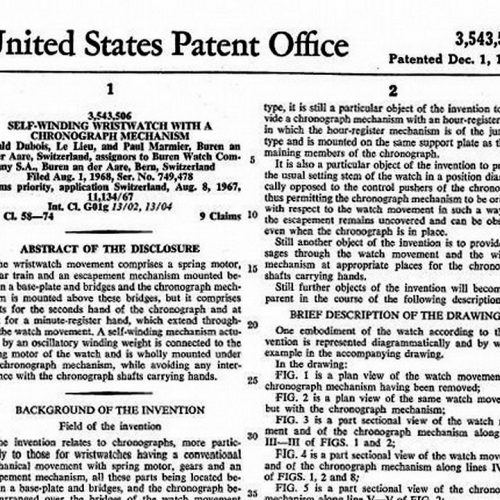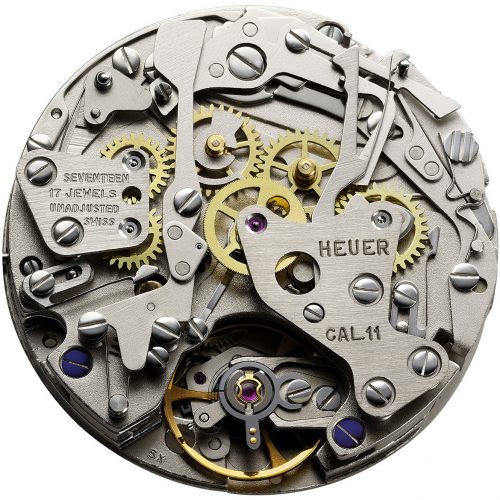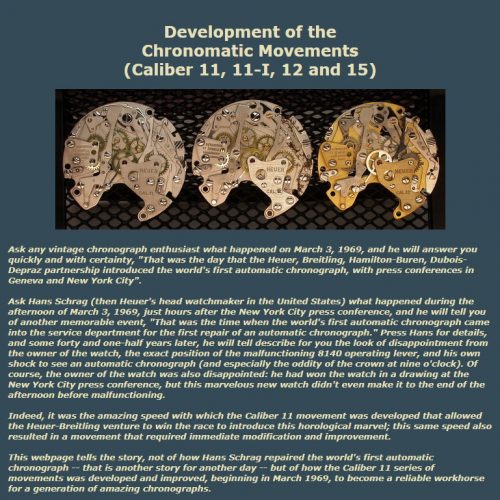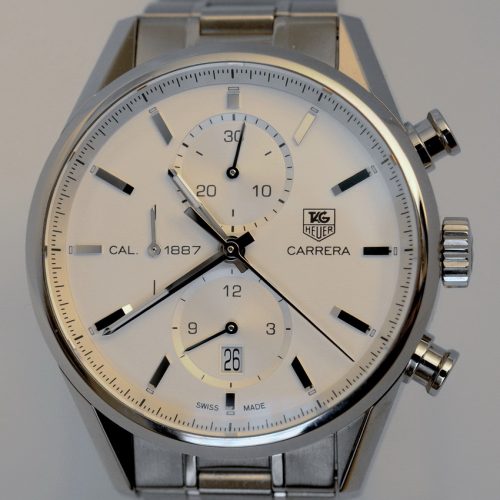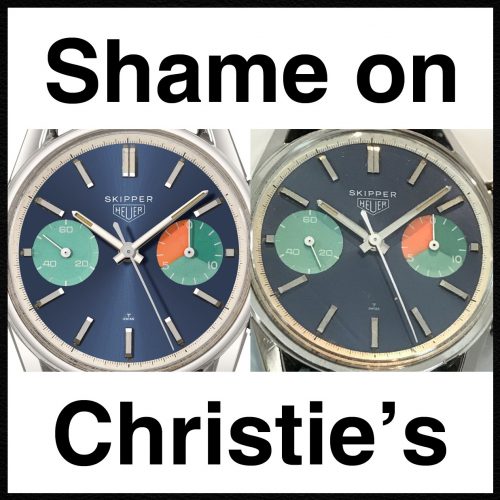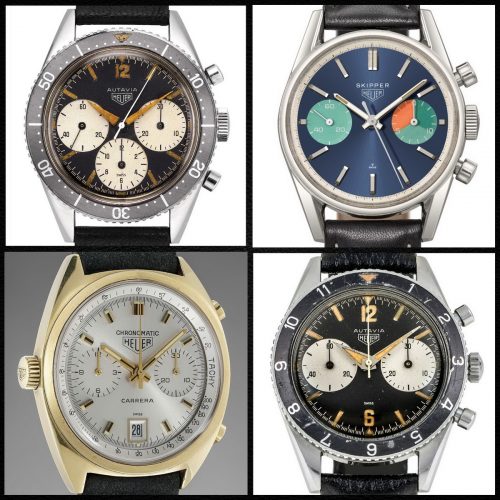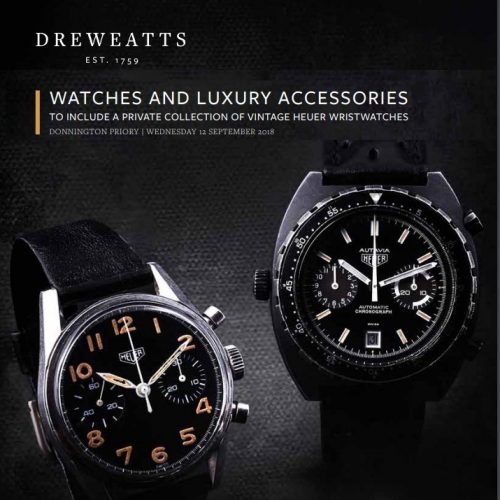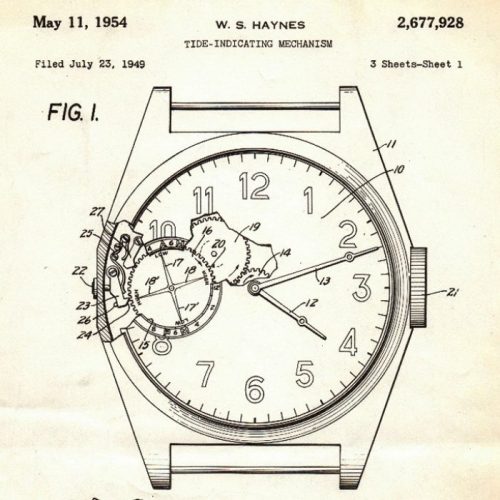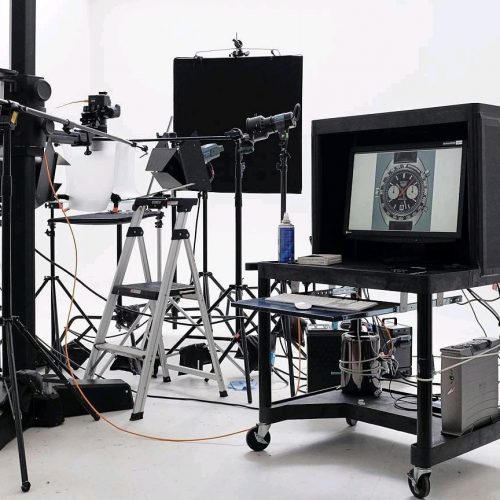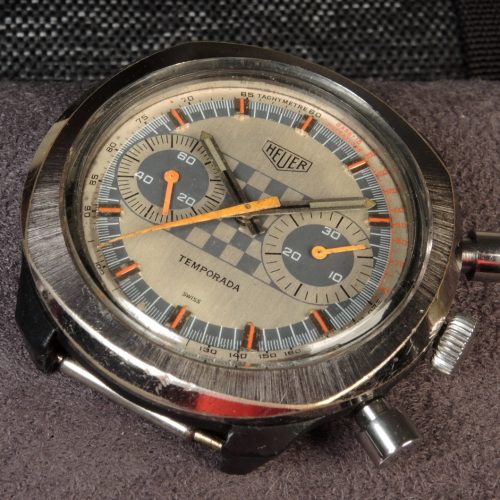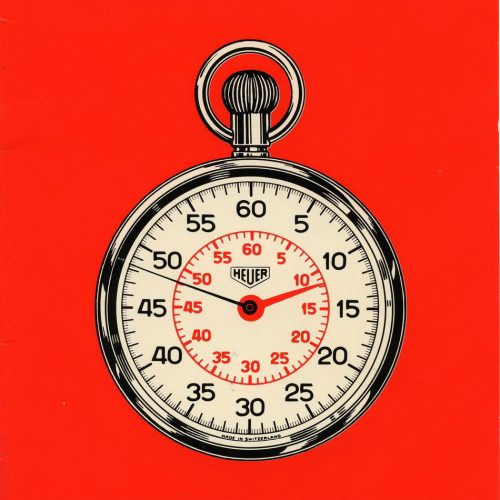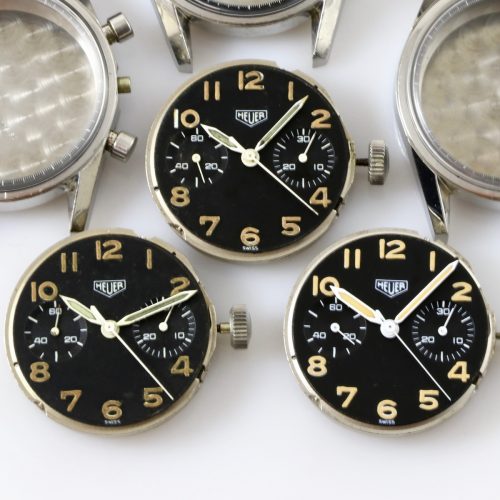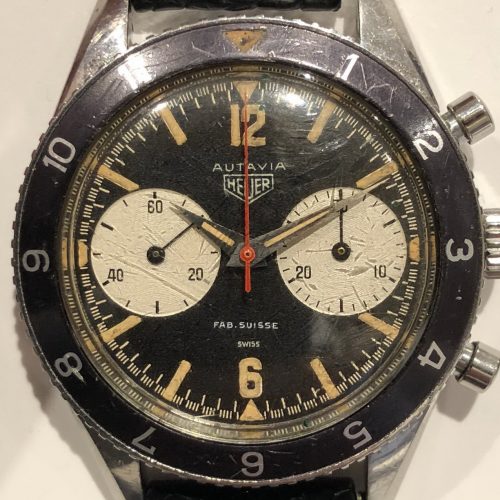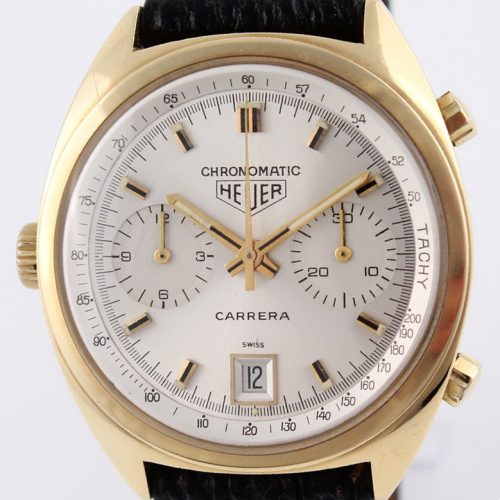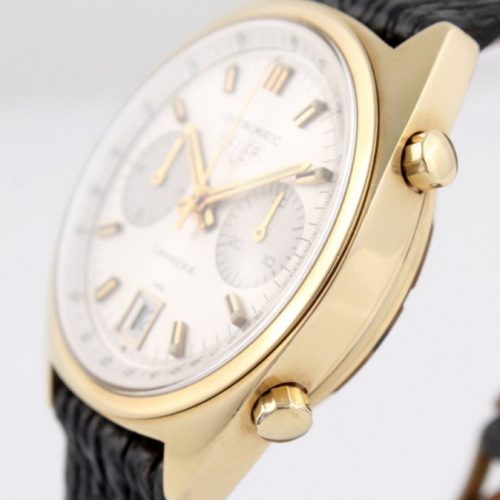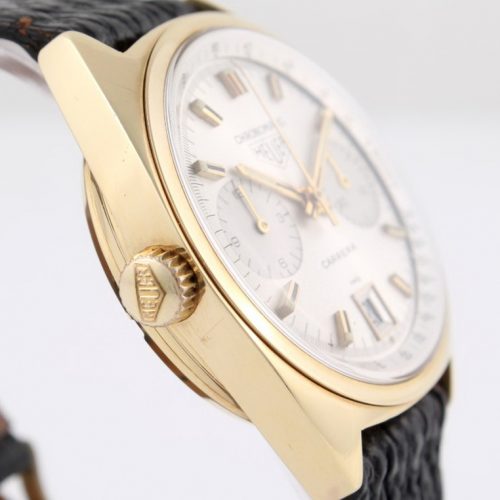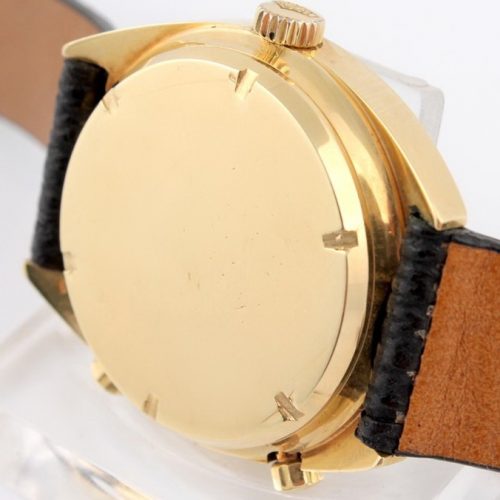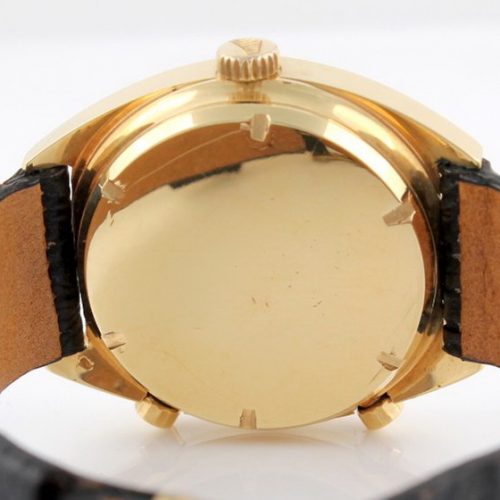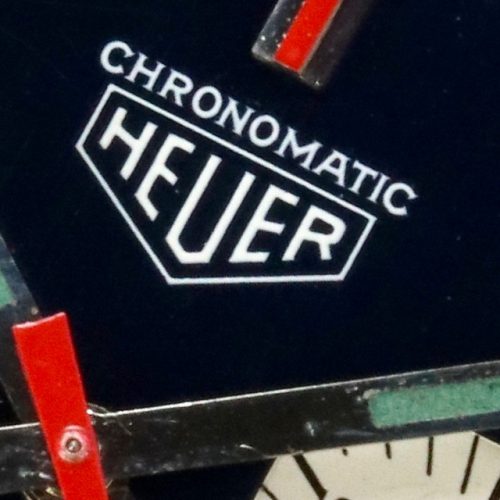My last “Year-End Clearance Sale” was in 2017, so it is time for me to sell a few watches that are not getting enough wrist time. I have checked each of the watches to confirm that it is setting, winding and running properly, and that the chronographs are operating properly (start / stop / reset), but service history is unknown, unless otherwise described.
- Breitling Unitime, Reference 2610 — [SOLD]
- Breitling Co-Pilot, Reference 7650 — [SOLD]
- Heuer Reference 349 AR — $3,000
- Heuer Reference 2447 AR — [SOLD]
- Leonidas “Bund” Chronograph, Italian Army Issued — [SOLD]
- Meylan Reference 813 — $3,500
- Mido Multi-Centerchrono — [SOLD]
- Omega “Speedy Tuesday” Ultraman Limited Edition — [SOLD]
- TAG Heuer Carrera Re-Issue, Reference CS3111 — [SOLD]
- Aristo Triple Calendar — [WITHDRAWN . . . because I’m keeping this one]
Payment is by bank wire or check; no PayPal or credit cards; no trades. Seller pays for shipping and insurance (which is required). Prices are firm, but offers near the listed prices will be considered.
Please send offers by email to onthedash@bellsouth.net; please do not use DMs, text messages, etc.
Breitling Unitime, Reference 2610
The whacky looking Unitime evidences the innovative designs and technologies that characterize vintage Brietling watches. Together, the checkerboard / roulette wheel and rotating bezel are used to track the time in a second time zone. For example, in the large photo below, the bezel is positioned at “Plus 6”, so that triangle indicates that if it is 1:50 AM (local time), then it’s 7:50 AM in the second time zone. Setting this watch is a thing of beauty – as the main time-of-day hands move clockwise, the checkerboard rotates counterclockwise, and things continue moving these directions as the watch runs. Case serial number 999993 suggests that the watch is from 1964; the movement is a Felsa 711; the case measures 37 millimeters across the dial, with a thickness of 13 millimeters. The watch seems to be all original, including the finish on the case.
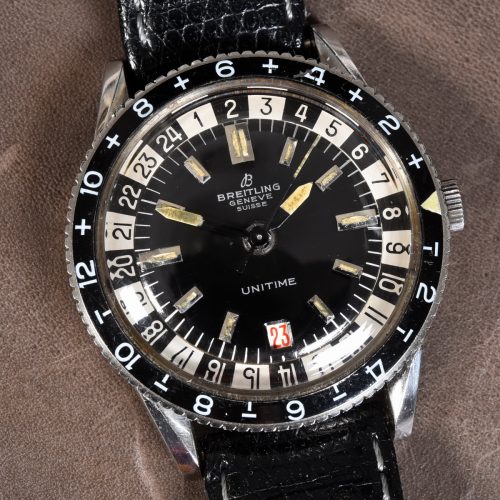
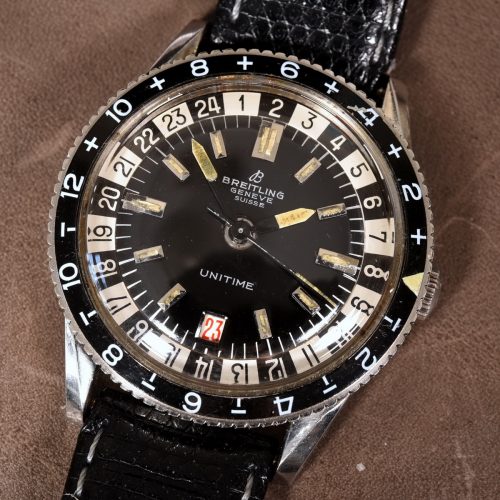
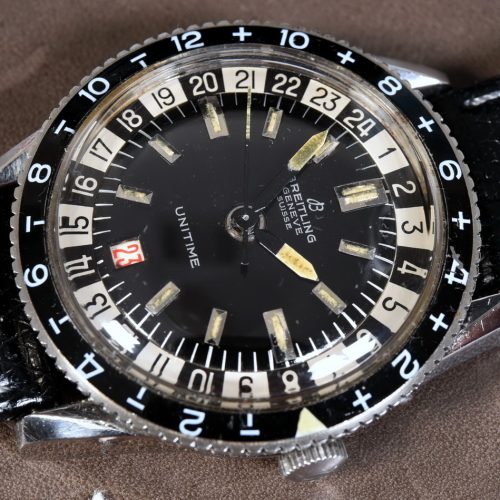
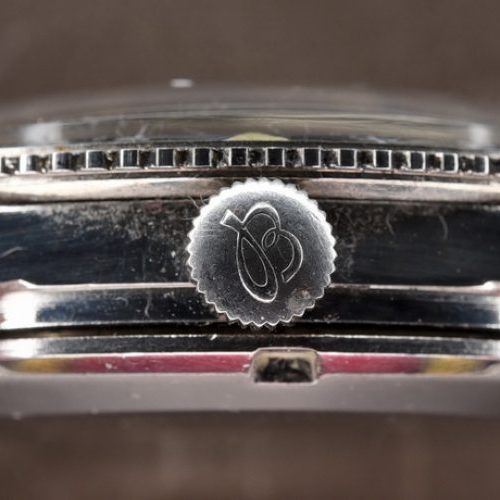
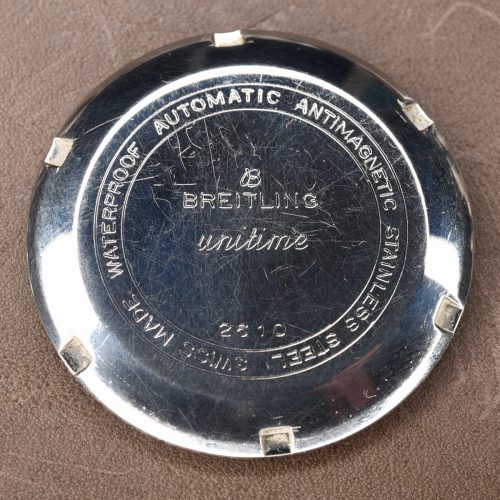
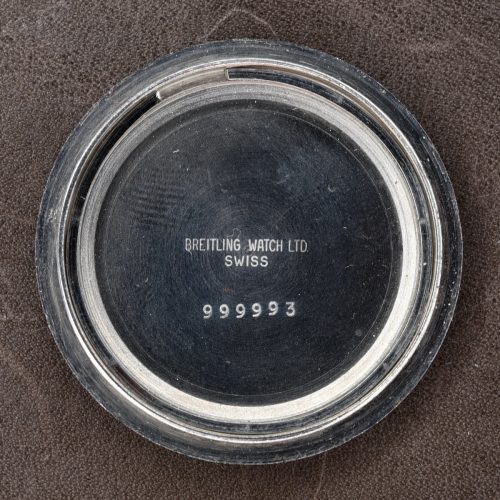
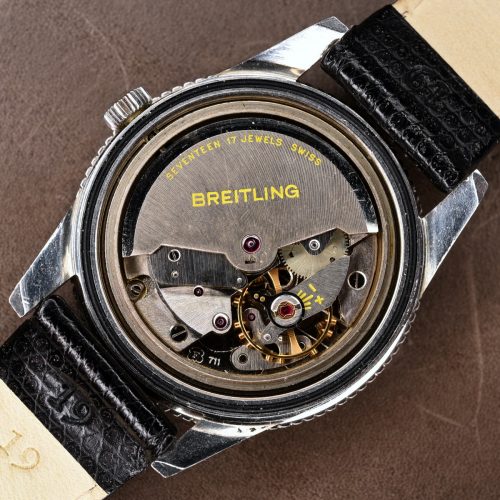
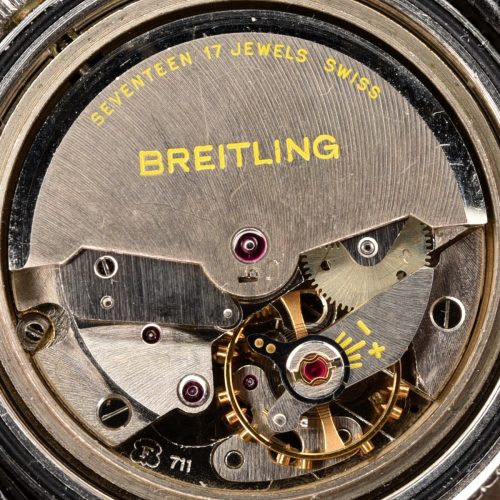
Breitling Co-Pilot, Reference 7650
The Breitling 765 Co-Pilot had its origins in 1953, with the chronograph that collectors call the “Lucy”, and this reference continued into the 1960s, with models worn by Raquel Welch and also Jean-Claude Killy. The defining feature of the Co-Pilots is the 15 minute chronograph recorder, the time required for a pilot to perform the pre-flight checks. The model being offered is the Reference 7650, which (at 42.5 millimeters) is larger than the Reference 765 and the case serial number 1276386 suggests that the watch is from 1969. The movement is the legendary Venus 178, used by Breitling for many years. Case has the original finish, and I have had the watch serviced. Some Breitling experts suggest that the lume on the dial has been touched up, but if that’s the case, it was done to a very high standard; other Breitling experts conclude that the lume on the dial is all-original. In either case, the dial looks awesome to my eye.
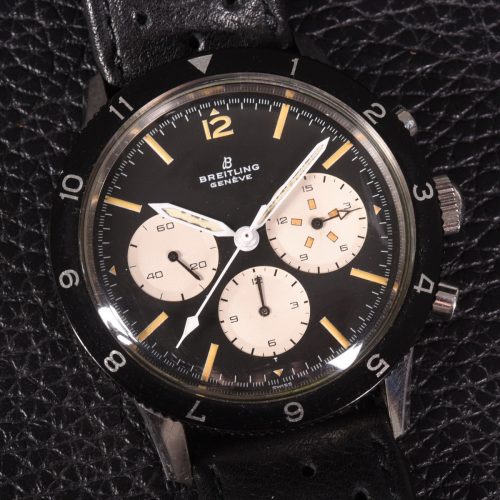
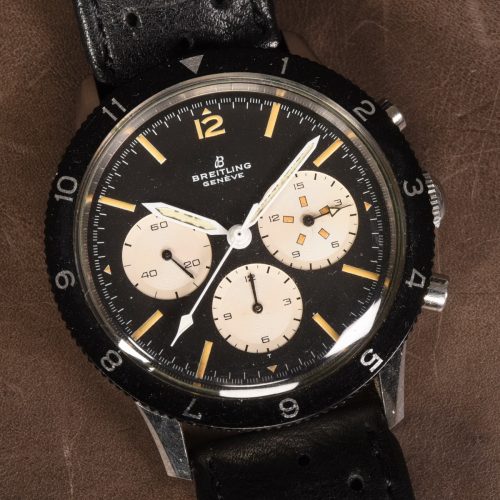
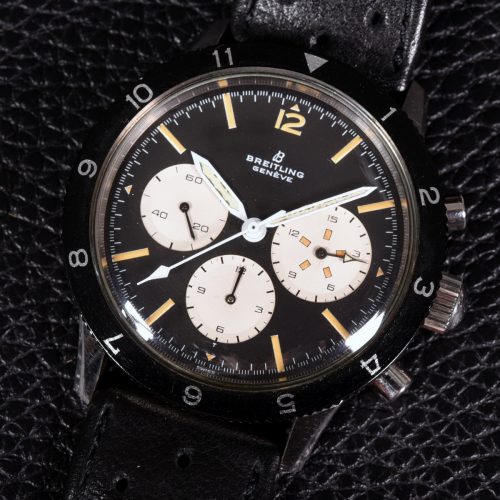
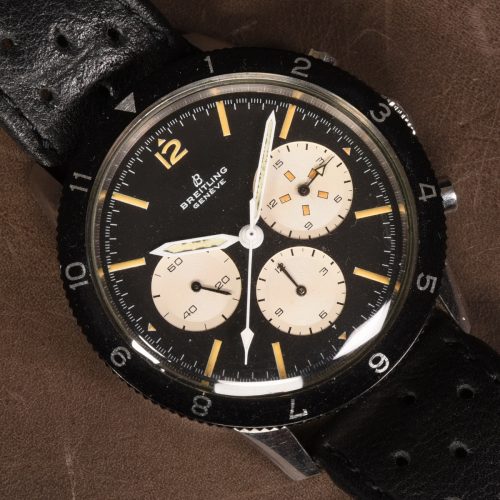
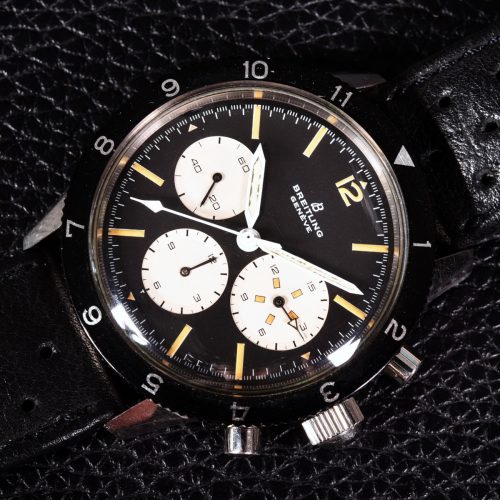
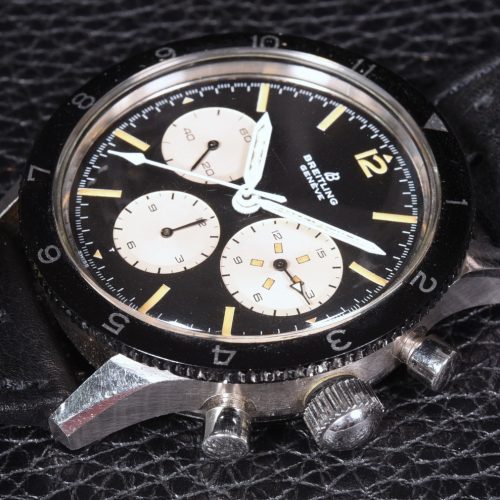
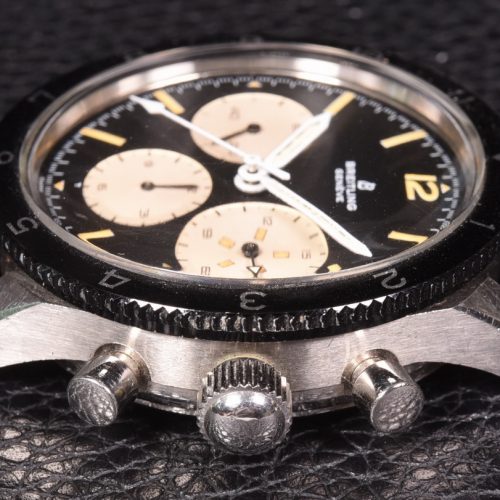
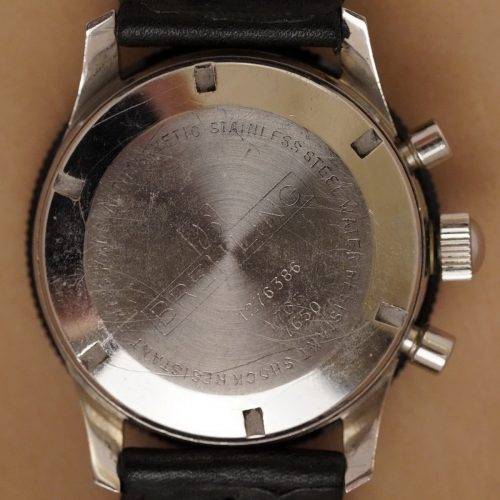
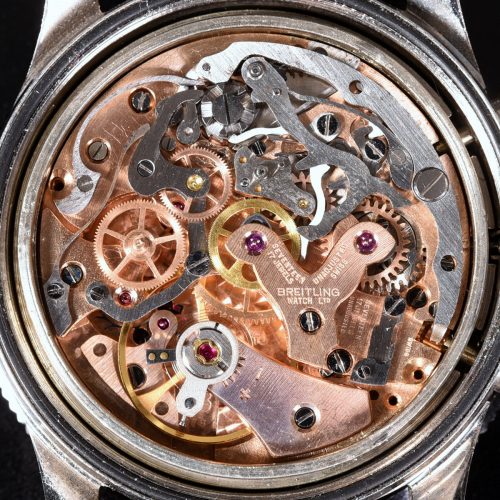
Heuer Reference 349 AR
Heuer’s Reference 349 was powered by the Valjoux 22 movement, housed in a chrome-plated case. At 14 ligne, the Valjoux 22 (and the companion Valjoux 71, three register model) was larger than the more common Valjoux 23 (and the companion Valjoux 72). The “AR” model has a white dial, with radium used on the dial and hands. Case serial number 56945 and movement serial number 703594 suggest that Heuer produced this chronograph in circa 1943; the case measures 36 millimeters across the dial, with a thickness of 13.5 millimeters.
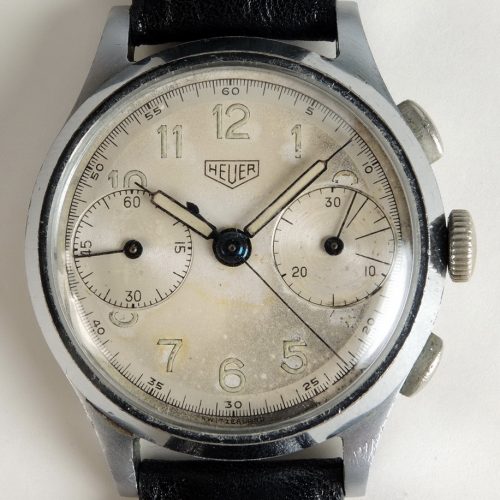
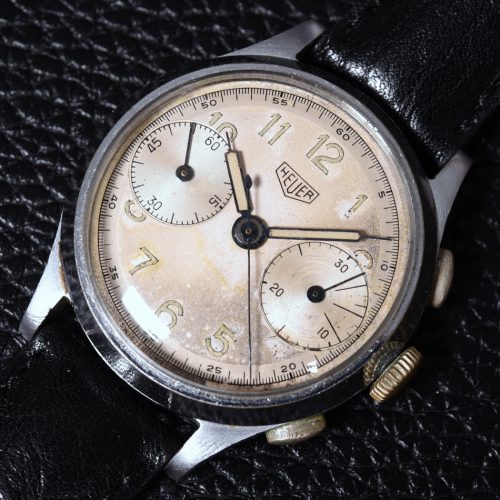
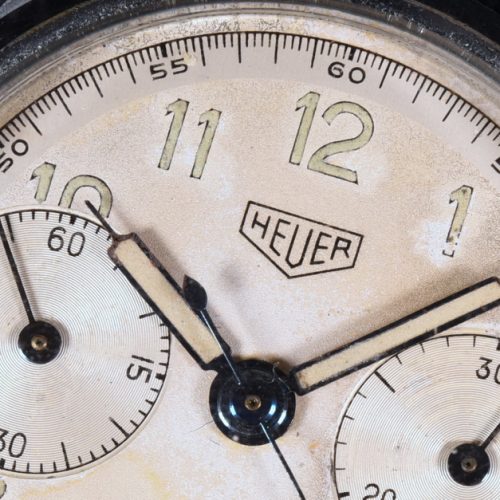

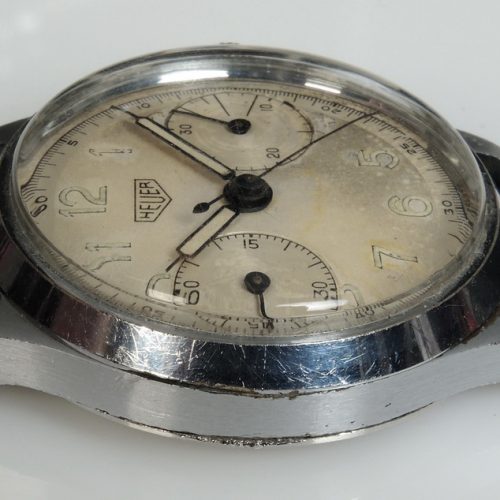
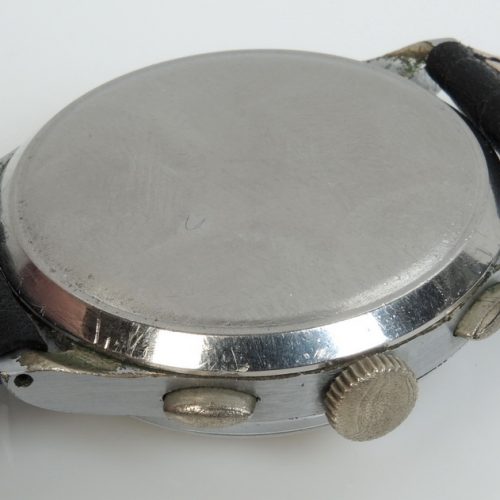
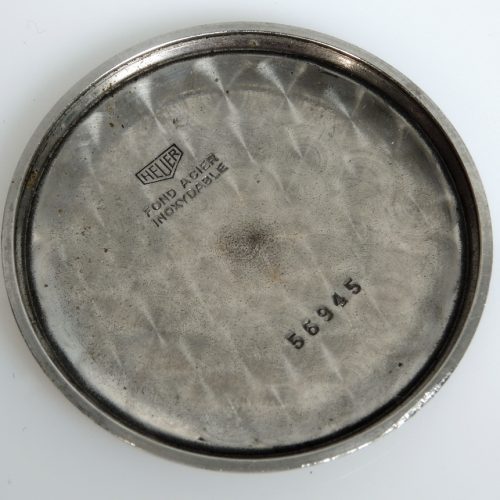
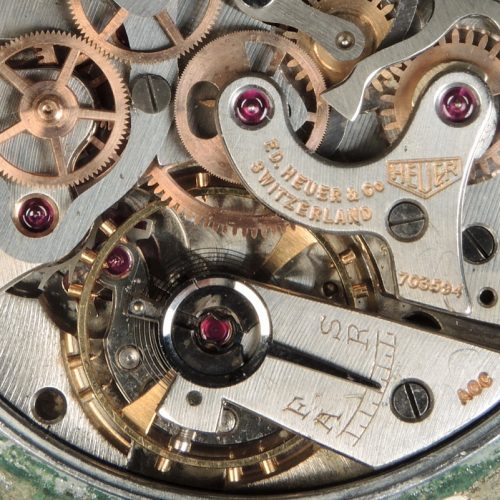
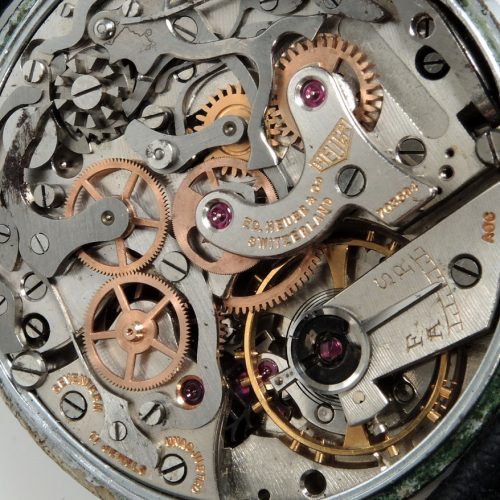
Heuer Reference 2447 AR
We all know that Heuer introduced the Carrera in 1962, and for some reason some collectors refer to any Heuer chronograph offered before 1962 as a “Pre-Carrera”. Maybe it’s kind of like referring to the Middle Ages as being “Pre-Columbian” . . . technically accurate, but a bit nonsensical. The three-register Carrera (with the Valjoux 72) was the Reference 2447, so to my way of thinking the term “Pre-Carrera” should be used only to refer to the Reference 2447 chronograph. Study this Reference 2447 chronograph and you will see why Heuer decided that the Carrera would use this same serial number – waterproof case (screw-back with round pushers), with strong, angular lugs, powered by the Valjoux 72 movement. This one is the “AR” version, meaning that it has a white dial, with radium on the dial and hands. It measures a solid 38 millimeters across the dial, so it is larger than the Reference 2447 Carrera, and it definitely has more presence on the wrist. This one is probably from the late 1950s, meaning that it was one of the last of the true “Pre-Carreras.” The case has been polished, but it still has a great look.
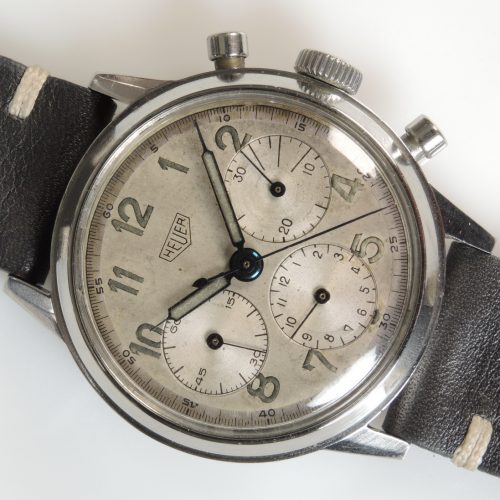
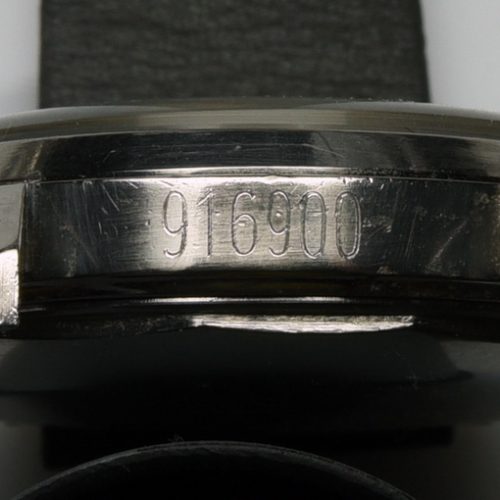
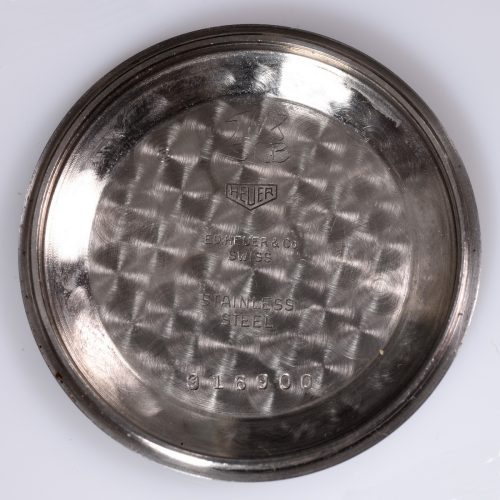
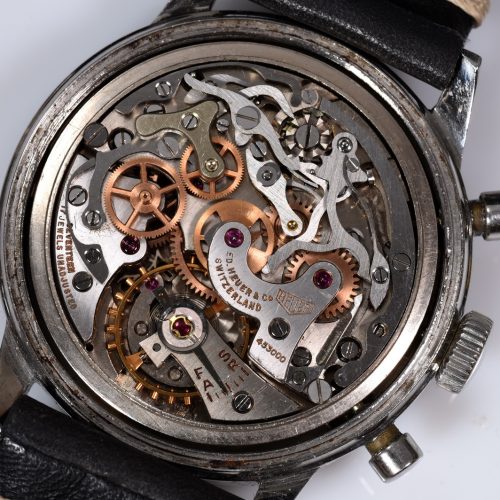
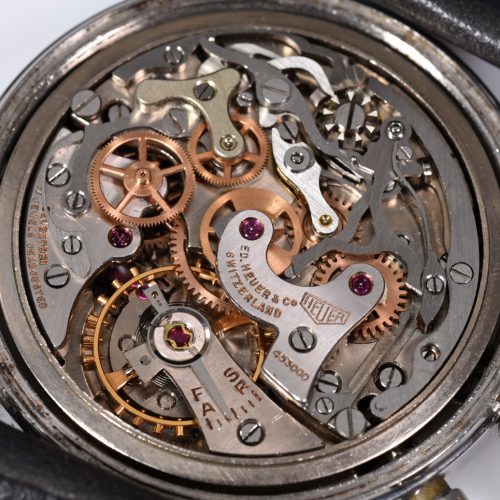
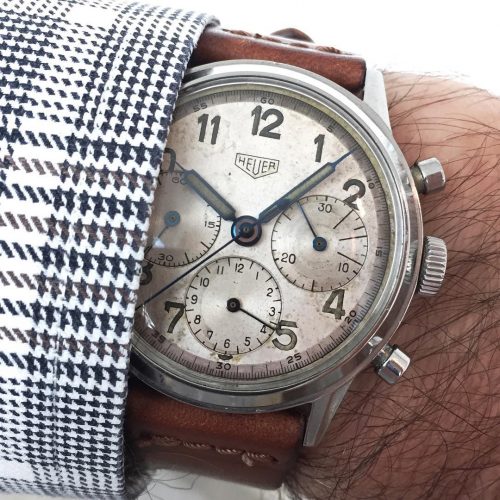
Leonidas “Bund” – Issued to Italian Army
Before the merger that created “Heuer Leonidas”, there was Leonidas Watch Factory, Ltd. With its broad range of stopwatches and chronographs, Leonidas would be the perfect merger partner for Heuer, which was also strong in these categories. Heuer would become famous for its Bundeswehr chronographs, issued to West German pilots, but the “granddaddy” of the Bunds [using a term from Fratello] was the model made by Leonidas for the Italian Army — thus the E.I. (Esercito Itialiano) issuance marking on the case-back. While at a glance, the Leonidas chronograph and the Heuer Bund may look similar, giving the two watches a closer look reveals many differences, primarily in the construction of the case. The Leonidas has a polished case, along with its crown and pushers, and the lugs have sharp edges with chamfers, which looks very different from the Heuer, with its matte, shot-blasted case, crown and pushers. The lugs on the Heuer Bund have a soft, rounded shape, which is very different from the angular finish of the Leonidas. For the Leonidas, the “let’s make everything shiny” theme continues with the paint on the dial and bezel. The Leonidas measures 43.2 millimeters across the dial, making the Heuer version seem just a bit puny at 32.6 millimeters.
For additional information on the Leonidas “Bund” chronograph, see the definitive Fratello posting, Leonidas Military & Heuer Bund Chronographs.
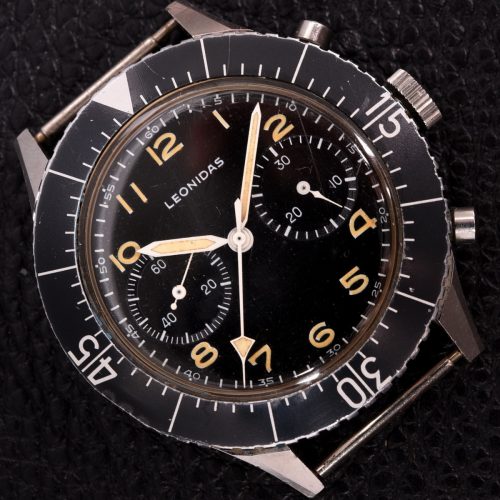
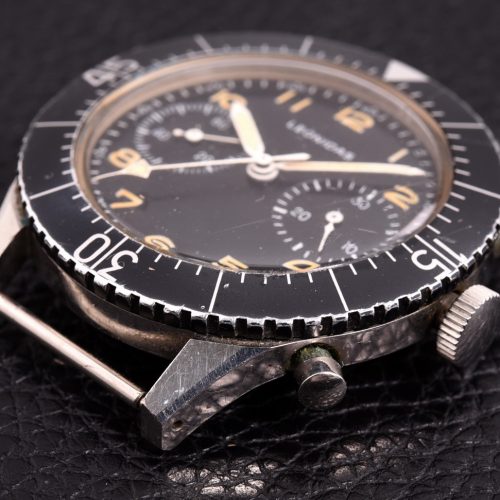
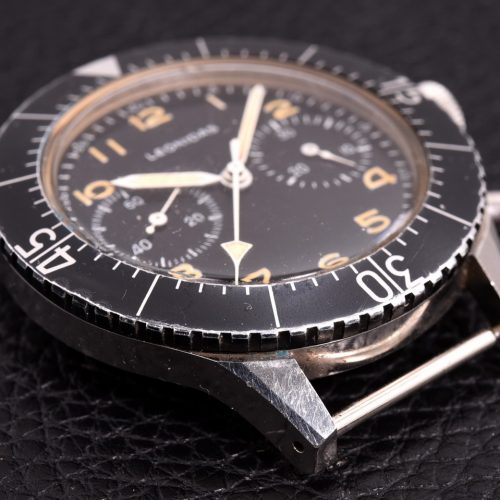
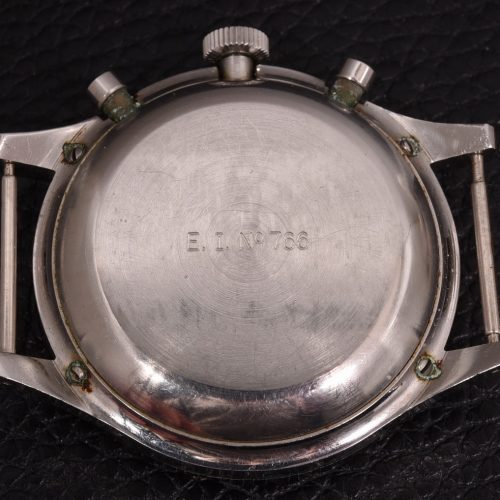
Meylan, Reference 813-65
In the 1960s, Meylan had a significant share in the market for stopwatches and timing gear for sports and industry. It is fitting that this chronograph has the decimal minutes scale on the dial, as rally navigation was conducted in decimal minutes. Think of the navigator trying to add, subtract, multiply or divide times – it’s a lot easier to do operations referring to 4.80 minutes, rather than 4 minutes, 48 seconds. The Reference 813-65 is from the 1960s, and it is powered by the Lemania Caliber 2520 (the ebauche for the Omega Caliber 321. The red decimal minutes scale really pops and the watch wears very well, at 36 millimeters across the dial and 12 millimeters thickness.
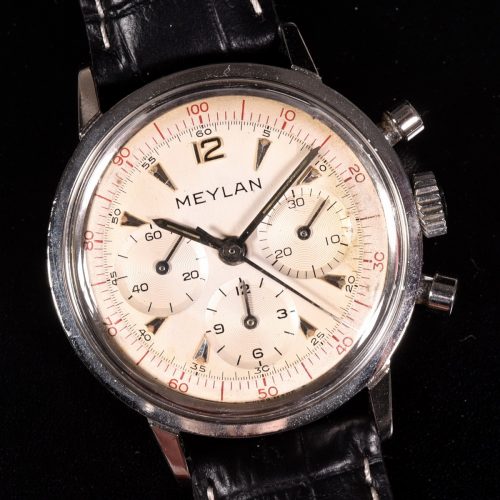
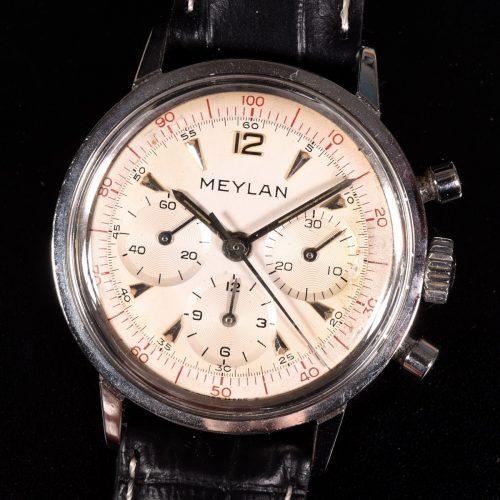
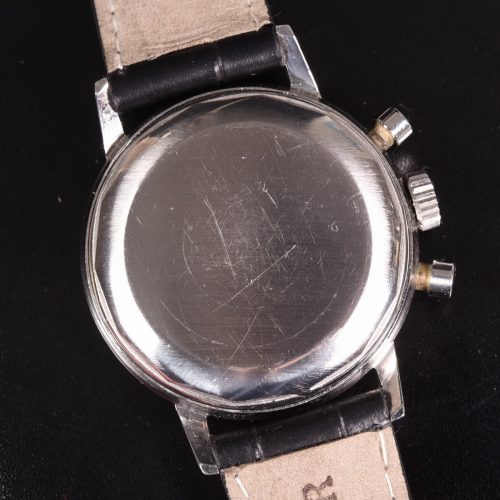
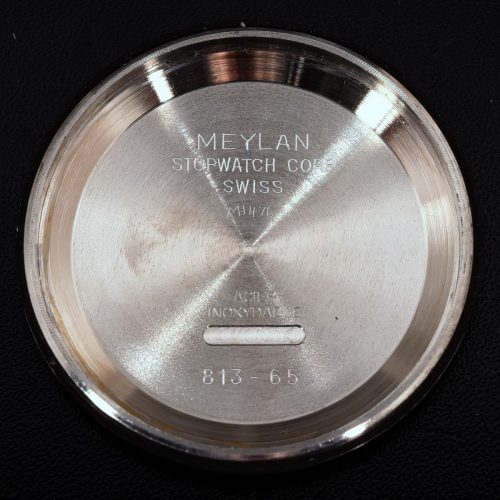
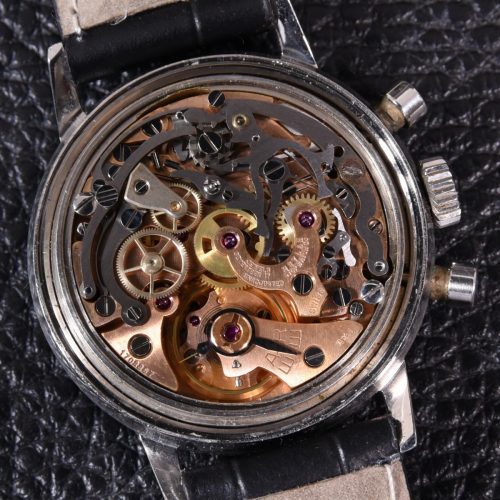
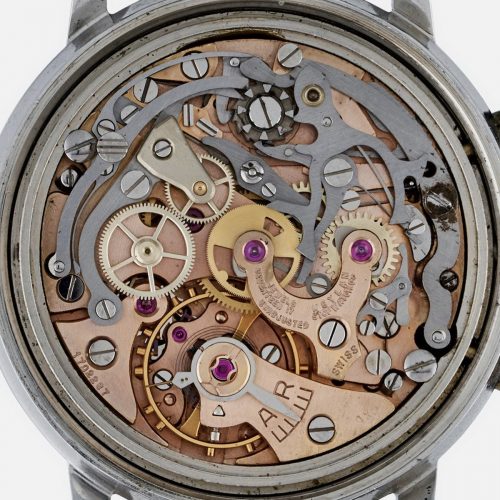
Mido Multi-Centerchrono
Produced in the early 1940s, the Mido Milti-Centerchrono has a distinctive appearance. It is a chronograph with 60-minute capacity, but the chronograph minute hand is mounted on the center pinion, so the chronograph has no registers. In the style of many 1940s chronographs, we see a tachymeter scale around the outside of the dial and a telemeter scale adjacent to the Arabic numerals. But the “thing” about this watch is the fantastic case. As Tomas Rosputinsky wrote in Fratello, “When it comes to the case construction, a little name-dropping is in order: it would be the famous Tauber et Fils that took over the even more famous François Borgel. The quite narrow, but wide pushers with deep sunburst engravings and nipple-like tops are real pieces of functional art that you might also find on Patek’s first waterproof chronograph.” The 35 millimeterchronograph features a 10-sided screwback case, and underneath is the Mido 1300 movement, a modified version of the Valjoux VZ. The mainplate and bridges are finished in copper, as if to state that this is a special chronograph, with the finest finishes all around.
For more information about this fascinating watch, you will want to read the excellent posting on Fratello, Gentleman Among Vintage Chronographs Mido Multi-Centerchrono.
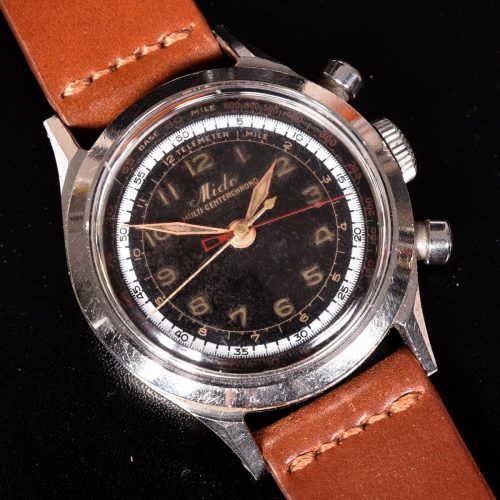
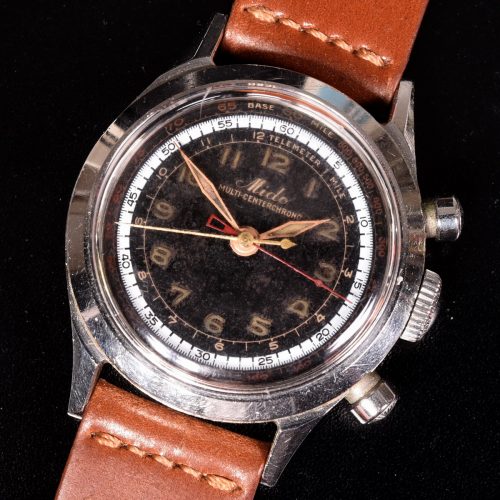
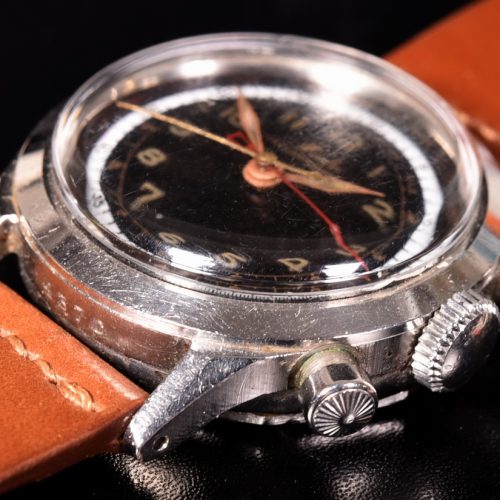
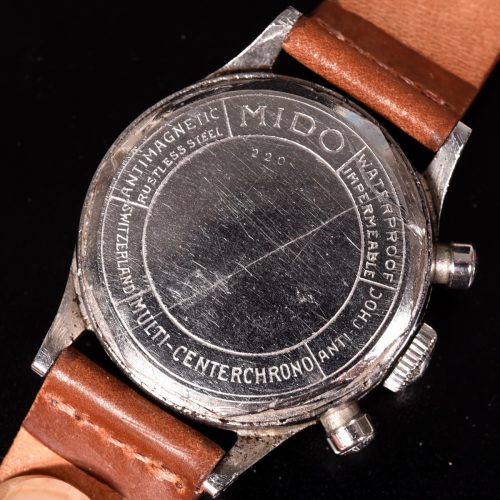
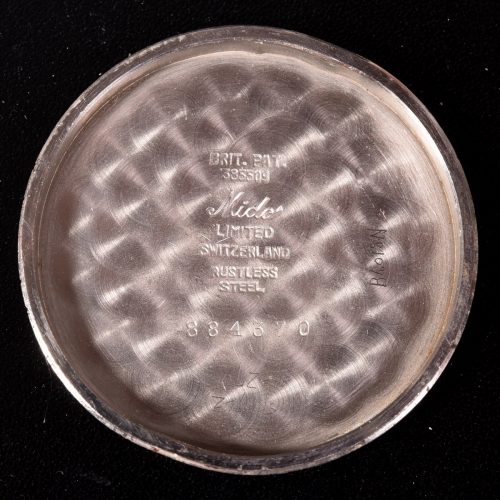
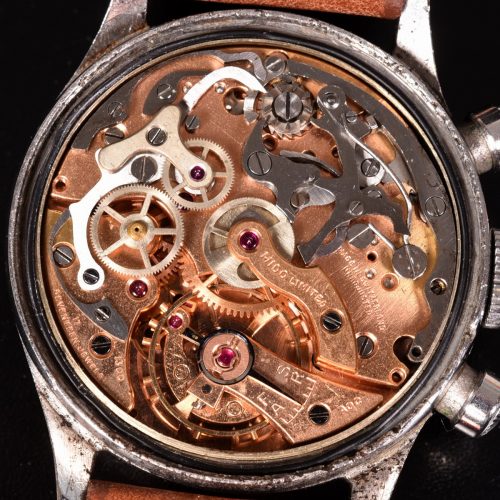
Omega “Speedy Tuesday” Ultraman Limited Edition
This is the Speedy Tuesday 2 “Ultraman” released by Omega in Summer 2018 as a Limited Edition of 2,012 pieces. Rather than providing my own description of the watch, let me simply refer readers to two reviews, from July 2018. Here’s Fratello, Speedmaster Speedy Tuesday 2 “Ultraman” – Out Now! (Live Pics and Video), posted on July 10, 2018, and Hodinkee, Introducing The Omega Speedmaster ‘Speedy Tuesday’ 2 Ultraman, or you can even go to Omega’s official site, here — The Speedmaster Limited Edition 42 mm “Ultraman”.
My watch is serial number 641, and it comes with all the goodies that came with the watch — fancy presentation box, NATO strap and leather strap (but not the black / orange strap currently shown on the watch), spring-bar tool with black light, instruction book, International Warranty card and Pictograms card. The watch is in “near mint” condition, as I rarely wore it, and that’s why I am selling it.
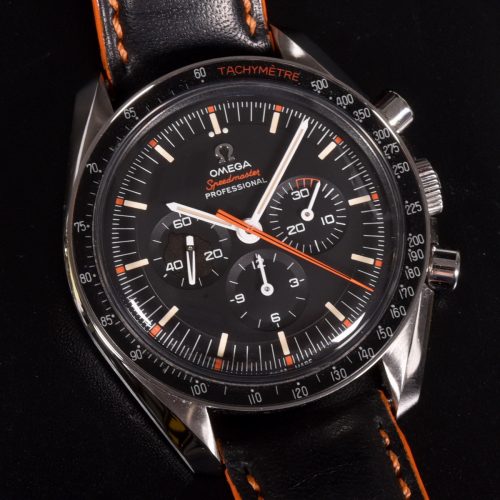
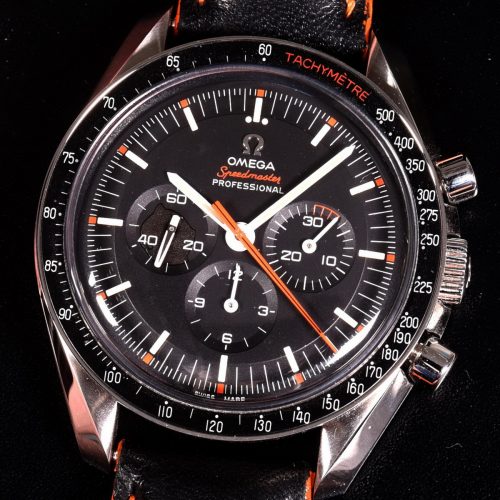
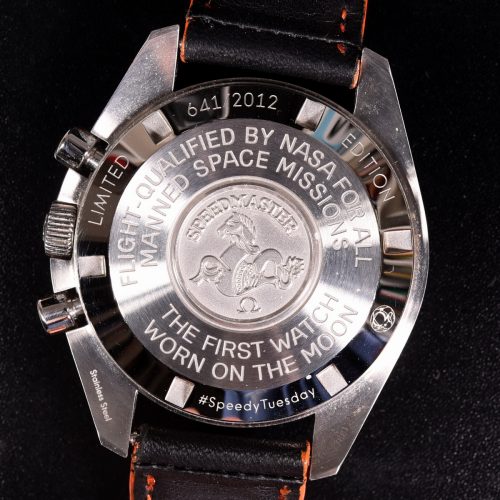
TAG Heuer Carrera Re-Issue, Reference CS3111
A posting on Calibre11.com suggests that the re-edition of the 1964 Heuer Carrera in 1996 is the single most important TAG Heuer ever released. Yes, TAG Heuer had survived the 1980s, primarily by selling dive watches in a variety of shapes and sizes, and in 1996 it’s as if TAG Heuer looked at its heritage catalogs and said, “Hey, why don’t we try the Carrera again.” The re-issue of the Carrera was successful, and so were the new versions of the Monaco and the Autavia (at least, starting in 2017), so three of the current TAG Heuer collections (which some call the “Big Three”) had their origins in re-issues.
In 1996, TAG Heuer re-issued three versions of the Carrera, one with a white dial, one in a gold case and the black one offered here (CS3111). The dimensions of this re-issue are almost identical to the first Carrera, Reference 2447, from 1962. Put them side-by-side in your watch box, and you will need to look carefully to pull out the watch you want. The telltales are that the re-issue does not have the “Carrera” on the dial and it has the bright white decimal minutes scale, around the edge of the dial. It measures 35.3 millimeters across the dial and is powered by the Lemanis 1873 manual-winding movement.
I used this watch for several photographs in the Hodinkee posting — The TAG Heuer Carrera Heuer 02 By Fragment Design Hiroshi Fujiwara – so have a look there to see more of the watch. For details about the 1996 re-issues of the Carrera, have a look at TAG Heuer Carrera Re-Edition Series — The Ultimate Collector’s Guide.
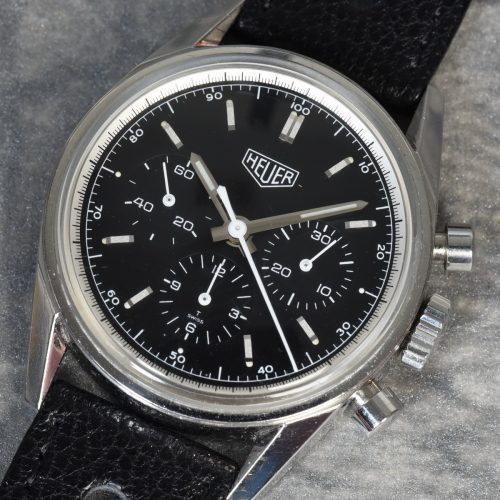
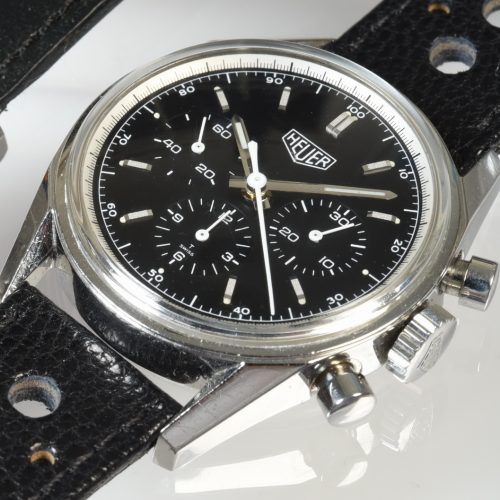
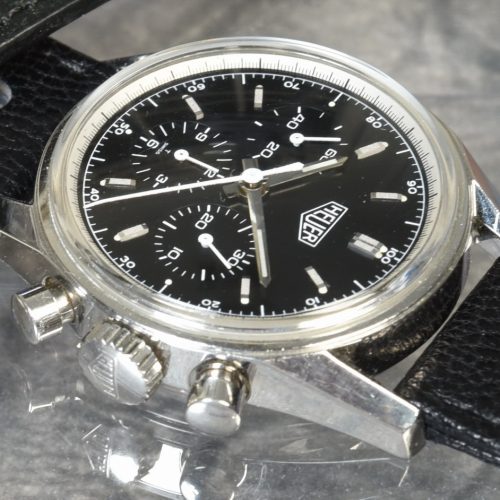
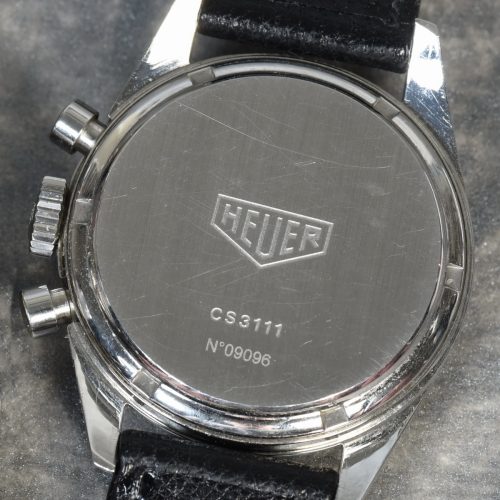
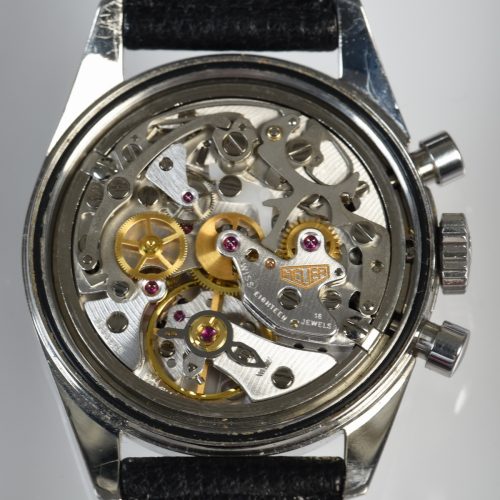
Aristo Triple Calendar [Withdrawn]
This watch is one of the “Poor Man’s Heuers”, made by Heuer for Aristo on a private-label basis. Circa 1950, Aristo was a major player in the markets for military watches and stopwatches, and the theory is that they contracted with Heuer to make some wrist chronographs for Aristo to include in its catalog. This is a pretty chronograph that I am offering at around half the price of the equivalent Heuer (Reference 2543). For an interesting history of the Aristo brand, see The Aristocrat of Pforzheim. [Withdrawn — I wore this watch for a couple of days this week, as it had been put away in the box for some years. After wearing the watch, I have decided to keep it.]
